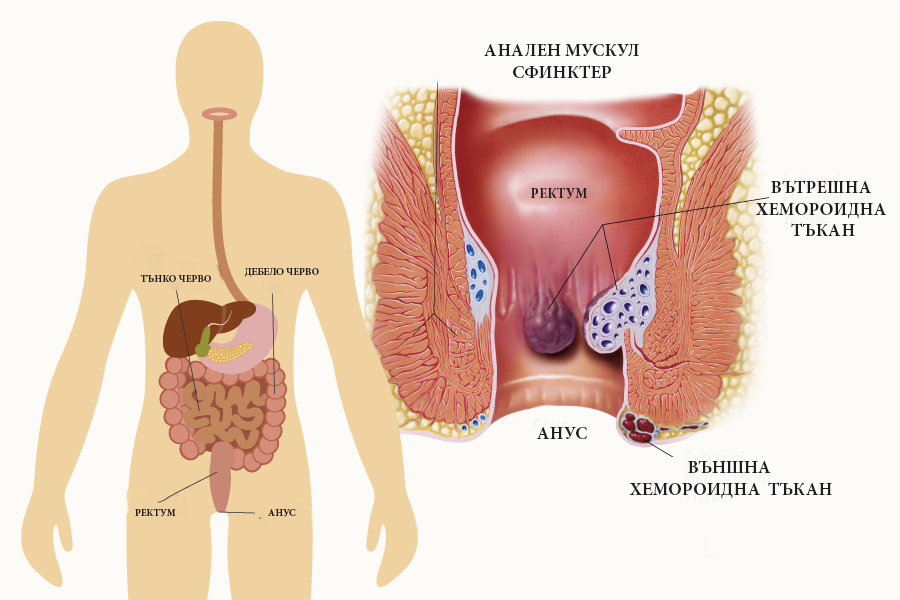How to treat rectal bleeding. Rectal Bleeding: Causes, Symptoms, and Treatment Options
What are the common causes of rectal bleeding. How can you differentiate between mild and severe rectal bleeding. When should you seek medical attention for rectal bleeding. What are the treatment options for various causes of rectal bleeding.
Understanding Rectal Bleeding: An Overview
Rectal bleeding is a symptom that should never be ignored, although it’s not always indicative of a serious condition. It can manifest in various ways, from a few drops of blood on toilet paper to more severe bleeding that may turn the toilet water red. While it can be alarming, understanding the potential causes and knowing when to seek medical attention is crucial for proper management and treatment.
Common Causes of Rectal Bleeding
Rectal bleeding can stem from various sources within the gastrointestinal tract. Some of the most common causes include:
- Hemorrhoids: Swollen veins in the rectum or anus
- Anal fissures: Small tears in the lining of the anus
- Diverticulosis: Small pouches that form in the colon wall
- Inflammatory bowel diseases: Such as Crohn’s disease or ulcerative colitis
- Colorectal polyps: Abnormal growths in the colon or rectum
- Colorectal cancer: Malignant tumors in the colon or rectum
Is rectal bleeding always a sign of cancer? No, rectal bleeding is not always indicative of cancer. While colorectal cancer can cause rectal bleeding, it’s more often due to benign conditions like hemorrhoids or anal fissures. However, any persistent or unexplained rectal bleeding should be evaluated by a healthcare professional to rule out more serious conditions.

Types and Severity of Rectal Bleeding
The appearance and volume of rectal bleeding can provide important clues about its source and severity:
- Bright red blood on toilet paper or in the bowl: Often indicates bleeding from the anus or lower rectum
- Blood mixed with stool: May suggest bleeding higher up in the colon
- Dark, tarry stools: Could indicate bleeding in the upper gastrointestinal tract
- Large volume of blood or blood clots: May signify a more serious condition requiring immediate medical attention
How can you determine the severity of rectal bleeding? The severity of rectal bleeding can be assessed based on the amount and frequency of blood loss. Mild bleeding typically involves a few drops or streaks, while moderate to severe bleeding may include blood clots, passing blood without stool, or toilet water turning red. Severe bleeding can lead to symptoms like weakness, paleness, and fainting, which require immediate medical attention.
When to Seek Medical Attention for Rectal Bleeding
While not all instances of rectal bleeding require immediate medical care, certain situations warrant prompt attention:

- Large amounts of blood or persistent bleeding
- Black, tarry stools
- Severe abdominal pain or cramping
- Dizziness, weakness, or fainting
- Fever accompanying the bleeding
- Unexplained weight loss
Should you always see a doctor for rectal bleeding? While not every instance of rectal bleeding requires immediate medical attention, it’s generally advisable to consult a healthcare provider if you experience any rectal bleeding, especially if it’s persistent or accompanied by other symptoms. This allows for proper diagnosis and timely treatment if necessary.
Diagnostic Procedures for Rectal Bleeding
When evaluating rectal bleeding, healthcare providers may employ various diagnostic procedures:
- Digital rectal examination: A physical examination of the rectum
- Anoscopy: Examination of the anus and lower rectum using a small, hollow tube
- Colonoscopy: A comprehensive examination of the entire colon using a flexible tube with a camera
- Flexible sigmoidoscopy: Examination of the lower part of the colon
- Imaging tests: Such as CT scans or MRI to visualize the gastrointestinal tract
What is the most effective diagnostic tool for identifying the source of rectal bleeding? While the choice of diagnostic tool depends on the suspected cause and severity of bleeding, colonoscopy is often considered the gold standard for evaluating rectal bleeding. It allows for direct visualization of the entire colon and rectum, enabling the detection of various conditions that can cause bleeding, from hemorrhoids to colorectal cancer.
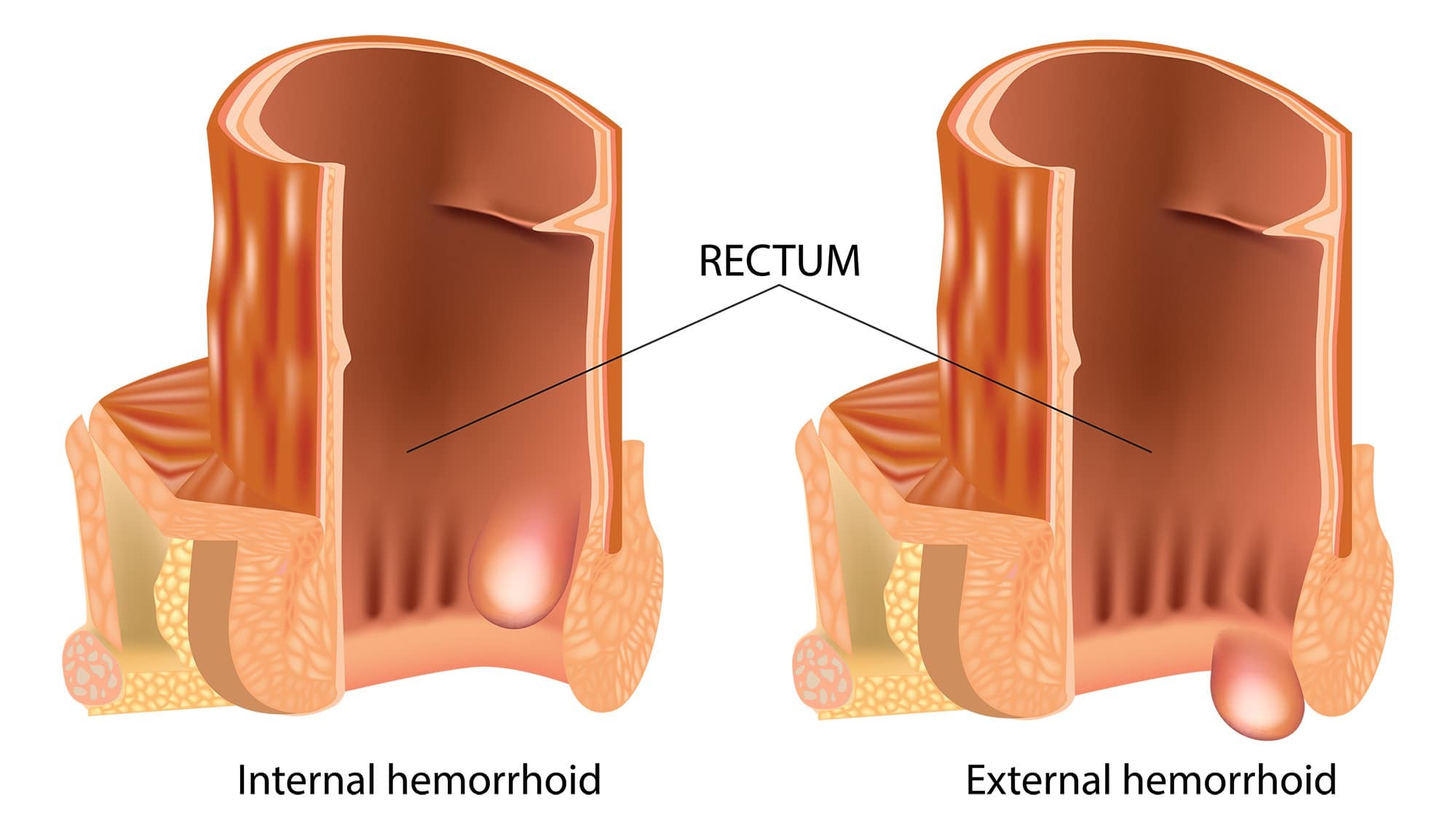
Treatment Options for Rectal Bleeding
The treatment for rectal bleeding varies depending on the underlying cause:
Hemorrhoids
- Over-the-counter creams and suppositories
- Sitz baths
- Dietary modifications to prevent constipation
- In severe cases, surgical removal may be necessary
Anal Fissures
- Topical ointments to promote healing
- Dietary changes to soften stools
- In persistent cases, surgical repair may be recommended
Inflammatory Bowel Diseases
- Anti-inflammatory medications
- Immunosuppressants
- Biologics
- Dietary modifications
Colorectal Polyps
- Removal during colonoscopy
- Regular follow-up screenings
Colorectal Cancer
- Surgery
- Chemotherapy
- Radiation therapy
- Targeted therapies
How effective are non-surgical treatments for rectal bleeding? The effectiveness of non-surgical treatments for rectal bleeding depends on the underlying cause. For conditions like hemorrhoids and anal fissures, conservative treatments such as dietary changes, topical medications, and lifestyle modifications can be highly effective. However, more serious conditions like colorectal cancer may require surgical intervention and other advanced treatments for optimal outcomes.

Preventing Rectal Bleeding
While not all causes of rectal bleeding are preventable, certain lifestyle modifications can help reduce the risk:
- Maintain a high-fiber diet to prevent constipation
- Stay hydrated by drinking plenty of water
- Exercise regularly to promote healthy bowel function
- Avoid straining during bowel movements
- Practice good anal hygiene
- Attend regular colorectal cancer screenings as recommended by your healthcare provider
Can dietary changes significantly reduce the risk of rectal bleeding? Yes, dietary changes can play a significant role in reducing the risk of rectal bleeding, particularly for conditions like hemorrhoids and anal fissures. A high-fiber diet helps prevent constipation and reduces straining during bowel movements, which can irritate the anal area and lead to bleeding. Additionally, staying well-hydrated and maintaining a healthy weight can contribute to overall colon health and potentially reduce the risk of more serious conditions that can cause rectal bleeding.
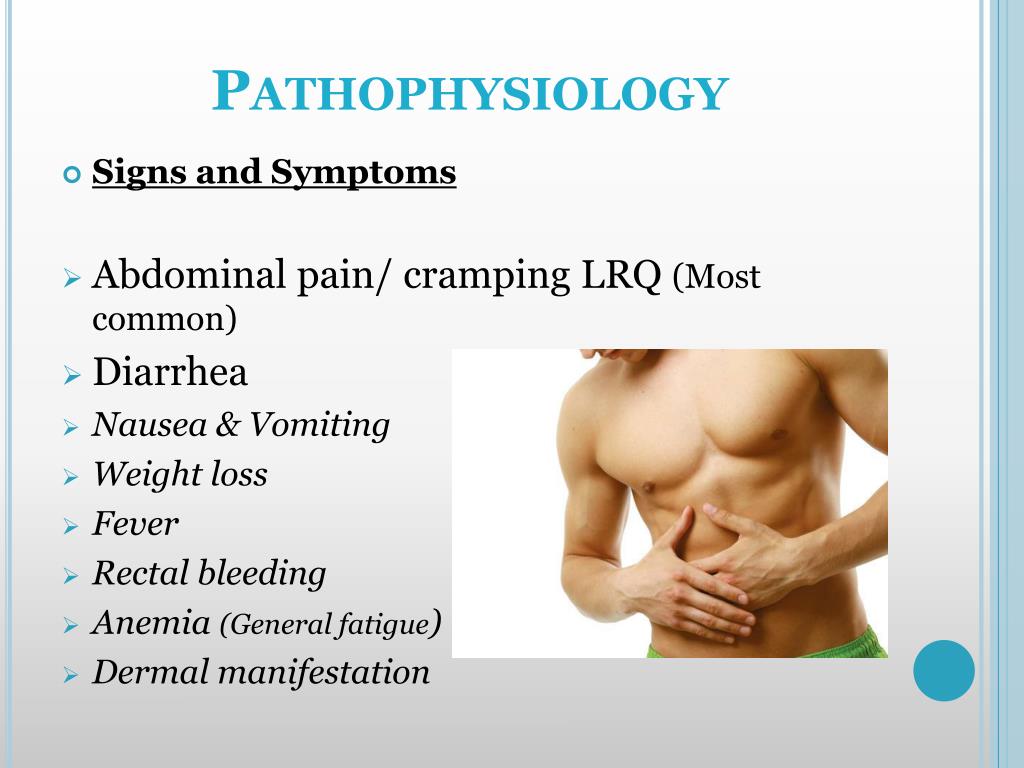
Long-term Management and Follow-up Care
For individuals who have experienced rectal bleeding, long-term management and follow-up care are essential:
- Regular check-ups with a healthcare provider
- Adherence to prescribed treatments and medications
- Monitoring for recurrence of symptoms
- Lifestyle modifications to prevent future episodes
- Participation in recommended screening programs, especially for those at higher risk of colorectal cancer
How often should individuals with a history of rectal bleeding undergo follow-up examinations? The frequency of follow-up examinations for individuals with a history of rectal bleeding depends on the underlying cause and the individual’s risk factors. For benign conditions like hemorrhoids, follow-up may be necessary only if symptoms recur. However, for more serious conditions like colorectal polyps or cancer, regular screenings may be recommended every 1-5 years, depending on the specific situation. It’s crucial to follow the guidance of your healthcare provider for personalized follow-up care.

The Psychological Impact of Rectal Bleeding
Experiencing rectal bleeding can be emotionally distressing for many individuals. It’s important to address the psychological aspects of this symptom:
- Anxiety and fear about potential underlying conditions
- Embarrassment or reluctance to discuss symptoms with healthcare providers
- Impact on quality of life and daily activities
- Stress related to medical procedures and treatments
How can patients cope with the anxiety associated with rectal bleeding? Coping with anxiety related to rectal bleeding involves several strategies:
1. Education: Learning about the potential causes and treatments can help alleviate fear of the unknown.
2. Open communication: Discussing concerns with healthcare providers can provide reassurance and clarity.
3. Support systems: Talking with trusted friends, family, or support groups can offer emotional comfort.
4. Mindfulness techniques: Practices like meditation or deep breathing can help manage stress and anxiety.
5. Professional help: In some cases, consulting a mental health professional may be beneficial for managing persistent anxiety or depression related to health concerns.

Rectal bleeding, while often benign, should never be ignored. Understanding its causes, knowing when to seek medical attention, and following through with appropriate treatment and follow-up care are crucial steps in managing this symptom effectively. By staying informed and proactive about their health, individuals can ensure timely diagnosis and treatment of any underlying conditions, potentially preventing more serious complications in the future.
Rectal Bleeding | Advocare Family Medicine Associates
Is this your symptom?
- Blood mixed in with the stool or passed separately
- Bloody or maroon-colored stools
- Tarry-black stools
- Blood just on toilet paper or a few drops into toilet water
- Streaks on surface of normal formed bowel movement (stool)
Some Basics…
- Rectal bleeding is never normal. However, it is not always serious.
- Sometimes bleeding can be mild. There may be just a few drops of blood in the stool or blood on the toilet paper. Often this is from hemorrhoids (piles) or a small scratch from a hard stool.
- Sometimes bleeding can more severe. There may be blood clots, bloody stool or black stool. There can be a number of possible causes. A visit to the doctor is needed.
Causes
Some common causes of rectal bleeding are:
- Anal fissure: This is a small crack or tear in the skin of the anus.
 It may result from passing hard stools or from having many diarrhea stools. Symptoms are pain during and right after passing a stool, mild rectal bleeding, and rectal itching.
It may result from passing hard stools or from having many diarrhea stools. Symptoms are pain during and right after passing a stool, mild rectal bleeding, and rectal itching. - Hemorrhoids: Another name for these is piles. These are enlarged veins that are just inside (“internal”) or outside (“external”) the rectal opening (anus). Two top reasons why people get hemorrhoids are constipation and pregnancy. People with bleeding hemorrhoids often see blood in the toilet water or small amounts of blood on the stool.
Some less common causes of rectal bleeding are:
- Angiodysplasia
- Cancer of colon (intestines)
- Cancer of rectum (anus)
- Colon polyps
- Crohn’s Disease
- Diarrhea
- Proctitis
- Pseudomembranous colitis
- Radiation treatment
- Rectal foreign object
- Ulcerative colitis
Types of Rectal Bleeding
- Bright red blood just on toilet paper: This is least serious.
 It often means that the bleeding is coming from the rectal opening (anus). The two most common causes of this type of bleeding are hemorrhoids and anal fissures.
It often means that the bleeding is coming from the rectal opening (anus). The two most common causes of this type of bleeding are hemorrhoids and anal fissures. - Bright red blood on the surface of a stool: This often means that the bleeding is from the anus or just inside. This can be caused by hemorrhoids or anal fissures. It can also be caused by more serious problems like cancer and polyps.
- Blood mixed with a stool: This usually means that there is a disease or problem inside the rectum or higher up in the colon (intestines). Examples are colon cancer, colon polyps, diverticulosis, and ulcerative colitis.
- Blood mixed with diarrhea: This may be a sign of a more severe colon infection. Other causes of bloody diarrhea are Crohn’s disease and ulcerative colitis.
- Tarry-black stool: This may be a sign of more severe bleeding from the stomach or esophagus. When the blood passes through the gut and comes out the rectum, it can make the stool look black or tarry.
 Stomach acid breaks down the blood and turns it black.
Stomach acid breaks down the blood and turns it black.
Severity of Rectal Bleeding is defined as:
- Drops, Spots, Streaks: blood on toilet paper or a few drops in toilet bowl; streaks or drops of blood on surface of stool
- Mild: more than just a few drops or streaks
- Moderate: small blood clots, passing blood without stool, or toilet water turns red
- Severe: large blood clots; on and off, or constant bleeding
What can Cause Red or Black Stools… that is Not Blood?
Causes of black-colored stools (not blood) are:
- Bismuth (Pepto-Bismol)
- Black licorice
- Blueberries
- Dark green stools may sometimes look like black. Put stool on white paper and hold under bright light. Is it green or black? Spinach and other dark vegetables can make stool look dark green.
Causes of red-colored stools (not blood) are:
- Beets
- Cranberries
- Medicines (Omnicef)
- Red food coloring dyes (red gelatin/Jell-O, red Kool-Aid)
- Red licorice
- Tomato juice or soup
When to Call for Rectal Bleeding
Call 911 Now
Call Doctor or Seek Care Now
| Contact Doctor Within 24 Hours
Contact Doctor During Office Hours
| Self Care at Home
|
Care Advice
Mild Rectal Bleeding
- What You Should Know:
- Rectal bleeding is never normal.
 However, it is not always serious.
However, it is not always serious. - Sometimes bleeding can be very mild. There may be just a few drops of blood in the stool or blood on the toilet paper. Often this is from hemorrhoids (piles) or a small scratch from a hard stool.
- You can treat very mild rectal bleeding from hemorrhoids, anal fissure, or constipation at home.
- Here is some care advice that should help.
- Rectal bleeding is never normal.
- Warm SITZ Baths Twice a Day:
- Sit in warm bath water for 20 minutes 2 times each day. This helps clean and heal the rectal area.
- If you want, you can add ¼ cup (80 grams) of table salt or baking soda to each tub of water. Stir the water until it dissolves.
- This is also called a Sitz bath.
- Stool Softener for Hard Bowel Movements:
- If you have hard stools, stool softeners can help soften the stool. This can help decrease rectal pain when passing stool.
- Docusate (Colace) is a stool softener that you can get over-the-counter.

- Call Back If:
- Bleeding increases
- Bleeding lasts more than 3 days
- Bleeding is off and on for weeks or months
- You think you need to be seen
- You get worse
Constipation
- What You Should Know:
- Trouble passing a stool, hard stools, and infrequent stools are signs of constipation.
- Healthy living habits can help treat and prevent constipation. Healthy habits include eating a diet high in fiber and regular exercise.
- You can treat mild constipation at home.
- Here is some care advice that should help.
- Eat a High Fiber Diet:
- Slowly increase the amount of fiber in your diet. This will help soften your stools. Fiber works by holding more water in your stools.
- Eat more fresh fruit and vegetables. They are great sources of natural fiber. This includes peas, prunes, citrus, apples, beans, and corn.

- Eat more foods made from whole grains. Foods made from whole grains also have fiber. Examples are bran flakes, bran muffins, graham crackers, oatmeal, brown rice, and whole wheat bread. Popcorn is also a good source of fiber.
- Liquids:
- Drinking enough liquids is important to keep your stools soft.
- Drink 6-8 glasses of water a day. Caution: certain medical problems require fluid restriction.
- Prune juice is a natural laxative.
- Avoid alcohol.
- Exercise:
- Staying active is always a healthy choice.
- Regular exercise decreases constipation.
- Even a daily walk for 15 minutes helps.
- Call Your Doctor If:
- Constipation lasts more than 2 weeks after using Care Advice
- Stomach swelling, vomiting or fever occur
- Constant or increasing stomach pain
- You think you need to be seen
- You get worse
Over-the-Counter (OTC) Medicines for Constipation
Step-By-Step: A step-by-step approach to using OTC medicines for constipation is best.

- Step 1 – Use a Fiber Laxative Every Day:
- You can take a fiber laxative every day instead of eating more fiber.
- An example of a fiber laxative is psyllium (Metamucil). You can buy this at the store without a prescription.
- Fiber can help soften your stools. Fiber works by holding more water in your stools. Be patient. Sometimes this takes 1 to 2 weeks to work.
- Osmotic Laxatives, as needed: You can take milk of magnesia or polyethylene glycol (PEG, Miralax). This type of medicine helps pull water into your intestines. This softens the stools.
- Read the instructions and warnings on the package insert for all medicines you take.
- Step 2 – Add a Stool Softener:
- For stools that are more firm or hard, try an over-the-counter stool softener. An example is docusate (Colace, Surfak).
- These medicines soften stools and make them easier to pass. You can buy them at the store.

- They may take 1 to 2 days to start working.
- Read the instructions and warnings on the package insert for all medicines you take.
- Step 3 – Use an Osmotic Laxative if Needed:
- If needed, you can try an osmotic laxative to treat occasional constipation. Examples are polyethylene glycol (PEG and Miralax) and milk of magnesia. You can buy these at the store without a prescription. Another option is to try a glycerine rectal suppository.
- These medicines help pull water into your intestines. This softens the stools. They often start working in 1 to 2 days. Glycerine suppositories often work within an hour or less.
- Do not use laxatives for more than 2 weeks unless your doctor instructs you to do this.
- Caution: do not use milk of magnesia if you have kidney disease.
- Caution: if you are pregnant, talk to your doctor before using these laxatives.

- Read the instructions and warnings on the package insert for all medicines you take.
- Step 4 – Add a Stimulant Laxative:
- If the constipation does not get better with the Care Advice in the above 3 steps, add a stimulant laxative. Use only if needed.
- Try bisacodyl (Dulcolax) tablets. You can buy these at the store without a prescription.
- These laxatives often work in 6 to 12 hours. Another option is Senna. This is a mild, plant-based laxative.
- Do not use laxatives for more than 2 weeks unless your doctor instructs you to do this.
- Caution: do not use stimulant laxatives if you are pregnant.
- Read the instructions and warnings on the package insert for all medicines you take.
- Call Your Doctor If:
- Constipation lasts more than 2 weeks after using Care Advice
- Stomach swelling, vomiting or fever occur
- Constant or increasing stomach pain
- You think you need to be seen
- You get worse
And remember, contact your doctor if you develop any of the ‘Call Your Doctor’ symptoms.

Disclaimer: this health information is for educational purposes only. You, the reader, assume full responsibility for how you choose to use it.
| Last Reviewed: | 12/3/2021 1:00:49 AM |
| Last Updated: | 10/21/2021 1:00:49 AM |
Copyright 2021 Amazon.com, Inc., or its affiliates. | |
Bleeding From the Rectum | Causes & Treatments for Anal Bleeding
Chronic or recurrent hemorrhoids
Chronic, or recurrent, hemorrhoids are swollen veins in the anus and rectum that never really resolve and may be symptomatic more or less constantly.
Hemorrhoids are caused by anything that puts pressure on the anus from the inside, such as straining during bowel movements; constipation; pregnancy; or anal intercourse.
Most susceptible are pregnant women and older people, though anyone can be affected.
Symptoms include a small amount of bleeding during or after a bowel movement, as well as discomfort, itching, or swelling around the anus.:max_bytes(150000):strip_icc()/rectal-cancer-symptoms-513946-FINAL-e383b3971a4746c590e8d1f359be7d45.png)
A medical provider can suggest treatment to ease the symptoms of chronic hemorrhoids, as well as make certain of the diagnosis since other, more serious conditions can have symptoms similar to hemorrhoids.
Diagnosis is made through patient history and physical examination.
Treatment most often involves simple lifestyle changes such as drinking more water; adding fiber-rich foods to the diet; using fiber supplements and stool softeners; not delaying, or straining, to pass a bowel movement; and using topical medications. Surgical procedures to remove the hemorrhoid can be used in some cases.
Rarity: Common
Top Symptoms: rectal bleeding, rectal pain, pain when passing stools, anal itching, painless rectal bleeding
Symptoms that never occur with chronic or recurrent hemorrhoids: unintentional weight loss
Urgency: Self-treatment
Anal fissure
An anal fissure is a break, or tear, in the mucous membrane lining of the anus.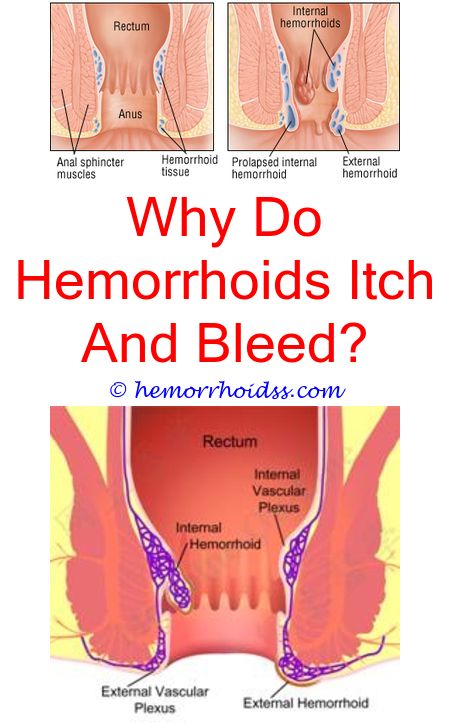 The anus is the opening at the end of the digestive tract where stool leaves the body. A fissure is caused primarily by constipation, which leads to straining to pass large hard stools; trauma caused by insertion of objec…
The anus is the opening at the end of the digestive tract where stool leaves the body. A fissure is caused primarily by constipation, which leads to straining to pass large hard stools; trauma caused by insertion of objec…
Lower gastrointestinal bleeding
The digestive, or gastrointestinal (GI), tract includes the esophagus, stomach, small intestine, large intestine, rectum, and anus. Lower gastrointestinal bleeding refers to internal bleeding from the large intestine, rectum, or anus, usually caused by hemorrhoids, ischemic bowel disease, or inflammatory bowel disease.
Rarity: Rare
Top Symptoms: rectal bleeding, severe rectal bleeding, moderate rectal bleeding
Urgency: Emergency medical service
Colonic neoplasm
Colonic neoplasm means “new tissue” growing in the colon, or large intestine. This neoplasm may be either benign (not cancerous) or malignant (cancer.)
The exact cause of any cancer remains unknown.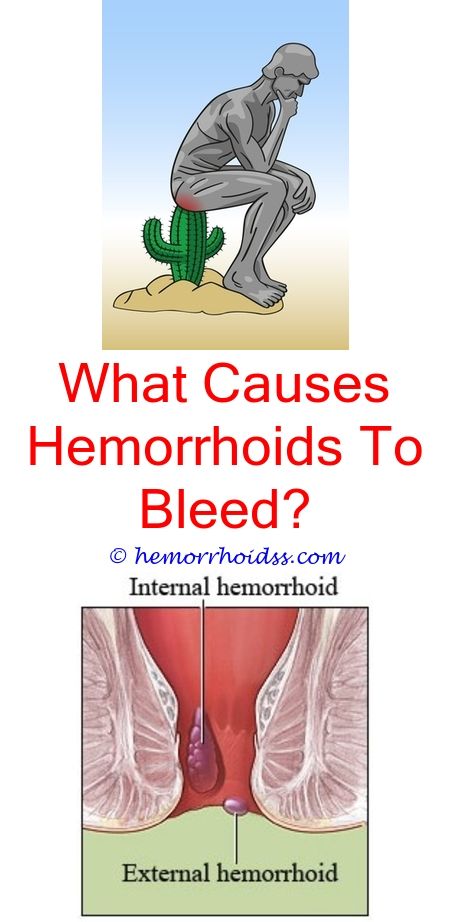 Risk factors seem to be:
Risk factors seem to be:
Being over fifty years of age.
- Family history of the disease.
- A high-fat, low-fiber diet, typical in the modern world
- Chronic inflammatory diseases of the colon such as Crohn’s disease.
- Smoking and alcohol use.
- Diabetes, obesity, and inactivity.
The earliest symptoms are usually polyps, small growths within the colon which can be detected on colonoscopy and removed before they can become cancerous. Later symptoms may be unexplained fatigue; change in bowel habits; persistent abdominal discomfort such as gas or cramps; blood in stool; or rectal bleeding.
Diagnosis is made through colonoscopy and sometimes blood testing.
Treatment is done through surgery, which may be minor or extensive; and through chemotherapy with radiation therapy, usually done before and after surgery. Supportive care to keep the patient comfortable is also an important part of treatment.
Rarity: Rare
Top Symptoms: fatigue, stomach bloating, stool changes, diarrhea, constipation
Urgency: Primary care doctor
Chronic constipation
Constipation is a very common condition affecting the large intestine. It is characterized by difficulty passing stool, or passing stool less often. Commonly it is linked to not eating enough dietary fiber, not drinking enough fluids, or not getting enough exercise. Some medications can cause constipation as well.
It is characterized by difficulty passing stool, or passing stool less often. Commonly it is linked to not eating enough dietary fiber, not drinking enough fluids, or not getting enough exercise. Some medications can cause constipation as well.
Rarity: Common
Top Symptoms: stomach bloating, constipation, abdominal cramps (stomach cramps), pain when passing stools, rectal bleeding
Symptoms that always occur with chronic constipation: constipation
Symptoms that never occur with chronic constipation: unintentional weight loss
Urgency: Primary care doctor
Intestinal inflammation (diverticulitis)
Diverticula are small pouches that bulge outward through the colon, or large intestine. Diverticulitis is a condition where the pouches become inflamed or infected, a process which can cause fever, nausea, vomiting, chills, cramping, and constipation.
Rarity: Uncommon
Top Symptoms: abdominal pain (stomach ache), nausea, loss of appetite, diarrhea, constipation
Symptoms that never occur with intestinal inflammation (diverticulitis): pain below the ribs, pain in the upper right abdomen
Urgency: Hospital emergency room
New onset crohn’s disease
Crohn’s disease is an inflammation of the bowel.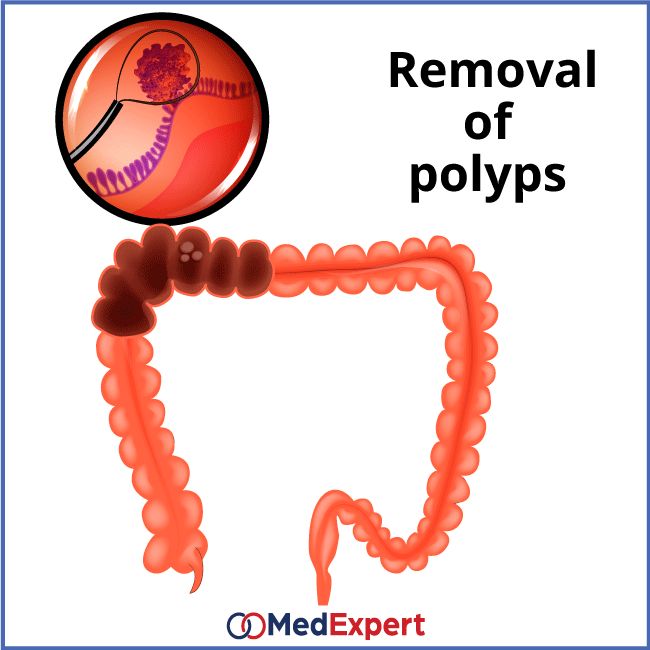 It is caused by a faulty immune system response which makes the body attack the lining of the intestines.
It is caused by a faulty immune system response which makes the body attack the lining of the intestines.
The disease usually appears before age thirty and can affect anyone. Those with a family history may be most susceptible. Smoking is a known risk factor.
Aggravating factors include stress, poor diet, and nonsteroidal anti-inflammatory drugs such as ibuprofen and aspirin.
Early symptoms usually develop gradually, but can appear suddenly. These include fatigue, loss of appetite, fever, mouth sores, diarrhea, abdominal pain, and blood in stool.
Untreated Crohn’s disease can cause ulcers throughout the digestive tract as well as bowel obstruction, malnutrition, and deteriorating general health.
Diagnosis is made through blood test and stool sample test. Colonoscopy, CT scan, MRI, endoscopy, and/or enteroscopy may also be used.
Crohn’s disease cannot be cured, but can be managed through reducing the inflammation. Antibiotics, corticosteroids, and immune system suppressors may be tried.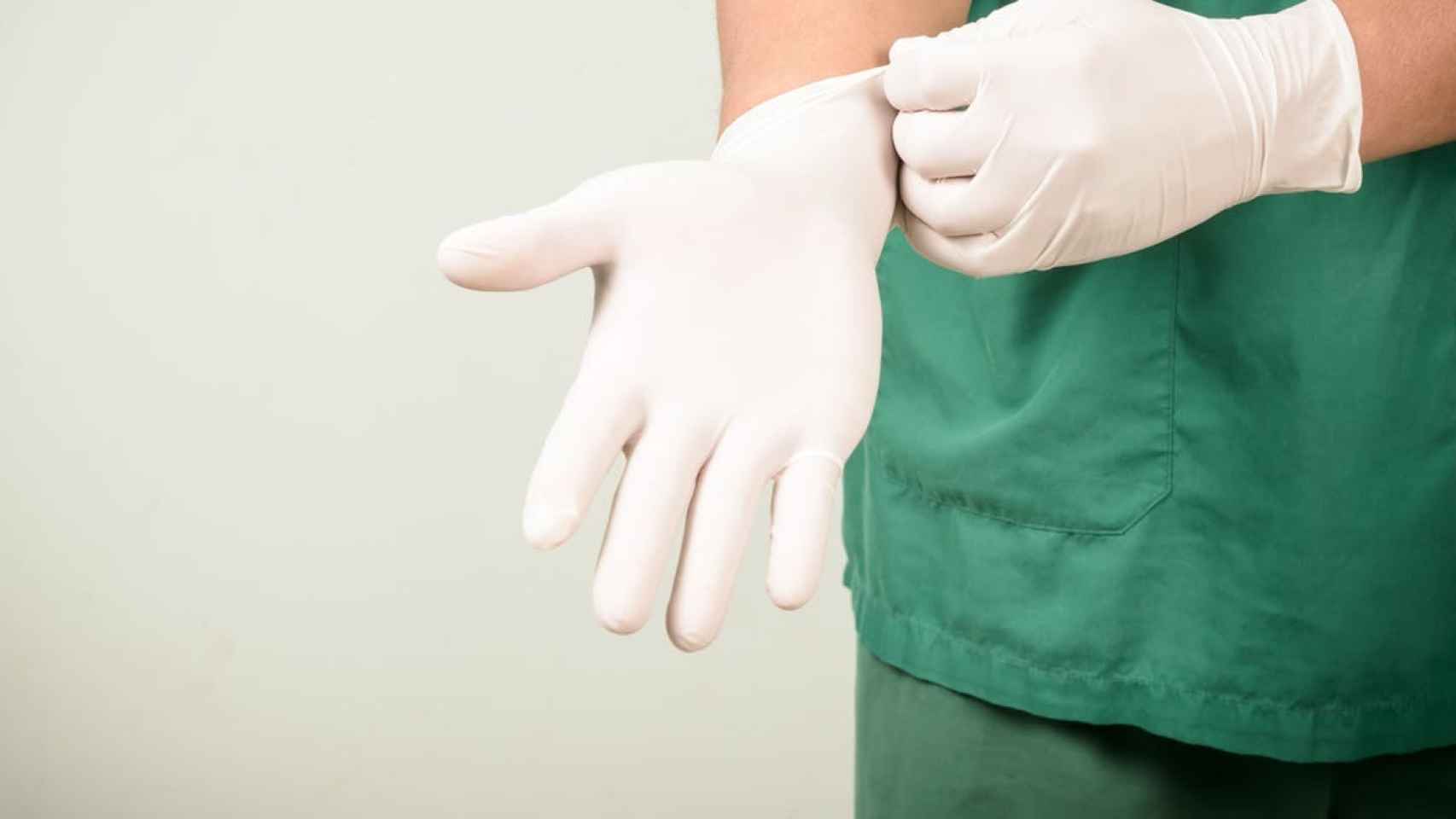 Excellent nutrition, vitamin supplements, smoking cessation, and reduction in stress can be helpful.
Excellent nutrition, vitamin supplements, smoking cessation, and reduction in stress can be helpful.
Rarity: Rare
Top Symptoms: fatigue, stomach bloating, loss of appetite, constipation, abdominal cramps (stomach cramps)
Urgency: Primary care doctor
Diverticulosis
Diverticulosis is the common condition of small, sac-like pouches forming and pushing outward along the inside of the colon, called diverticula. With diverticulosis, there may be changes in bowel movement patterns as well as severe abdominal pain, bloating, constipation, diarrhea, or rectal bl…
Rectal Bleeding | Rectal Specialist Richmond
Seeing blood in the toilet, or on toilet paper, after a bowel movement can be scary. But not all rectal bleeding is a sign of something more serious.
What Causes Rectal Bleeding?
There are several common reasons for rectal bleeding. The most common is hemorrhoids. Other causes include anal fissures, polyps, colitis or tumors.
Bleeding From Hemorrhoids
There are two types of hemorrhoids, internal and external.
Internal hemorrhoids are more likely to be associated with painless, bright red blood while external hemorrhoids usually do not bleed, but are more painful.
In many cases, hemorrhoids respond to at home treatments including sitz baths (soaking the area in plain warm water for 10-20 minutes, several times a day), not straining during bowel movements or a change in diet.
In cases of recurring, severe or hemorrhoids causing excessive bleeding, there are several treatment options your doctor may recommend.
Bleeding From Fissures
Painful bowel movements with bright red rectal bleeding is usually caused by an anal fissure.
Anal fissures are small tears in the lining of the anus which can cause pain, bleeding and itching. Pain from fissures can sometimes last for hours.
If a fissure spreads downward it can result in a swollen lump.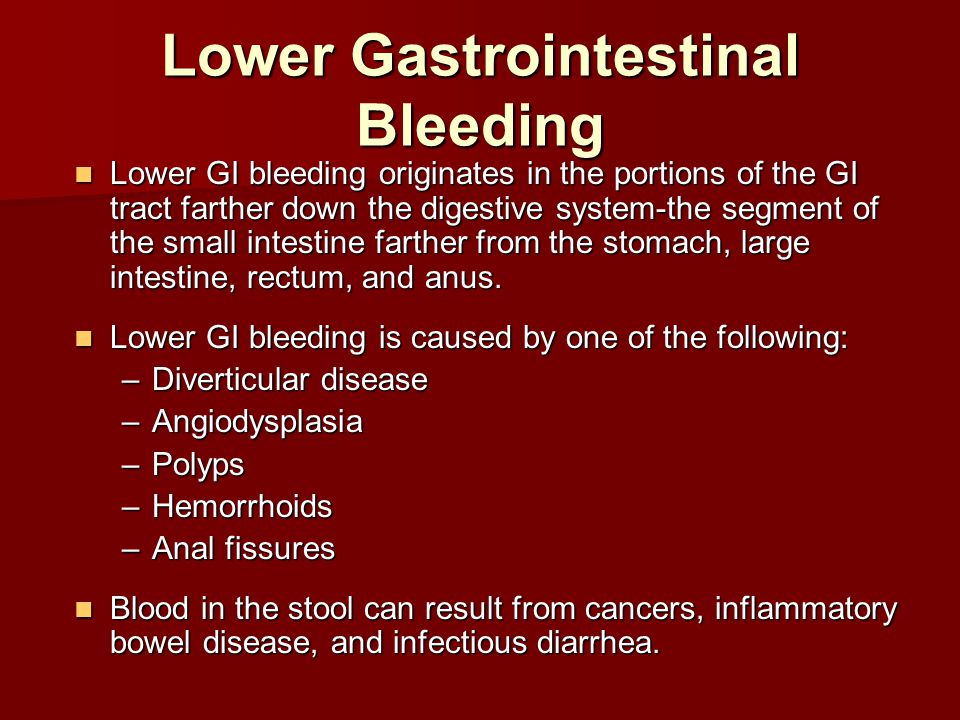 They can be caused by hard, dry bowel movements, diarrhea or inflammation of the anorectal area.
They can be caused by hard, dry bowel movements, diarrhea or inflammation of the anorectal area.
At least 50 percent of fissures heal by themselves and can be treated with home remedies including application of special medicated cream, use of stool softeners, avoidance of constipation, or sitz baths.
What Should You Do If You See Rectal Bleeding?
While rectal bleeding is often not serious, it is still a good idea to get it checked out by a doctor who can determine the cause and best course of treatment.
At your appointment, if hemorrhoids or fissures are ruled out, your doctor will discuss your family history of colon cancer or inflammatory bowel disease and may perform a digital rectal exam or anoscopy to determine the cause.
In most cases, rectal bleeding can be treated easily through non-invasive methods including at-home treatments or out-patient procedures performed in a doctor’s office.
We know it isn’t a topic most people feel comfortable talking about, but if you are experiencing rectal bleeding call Colon and Rectal Specialists in Richmond, VA.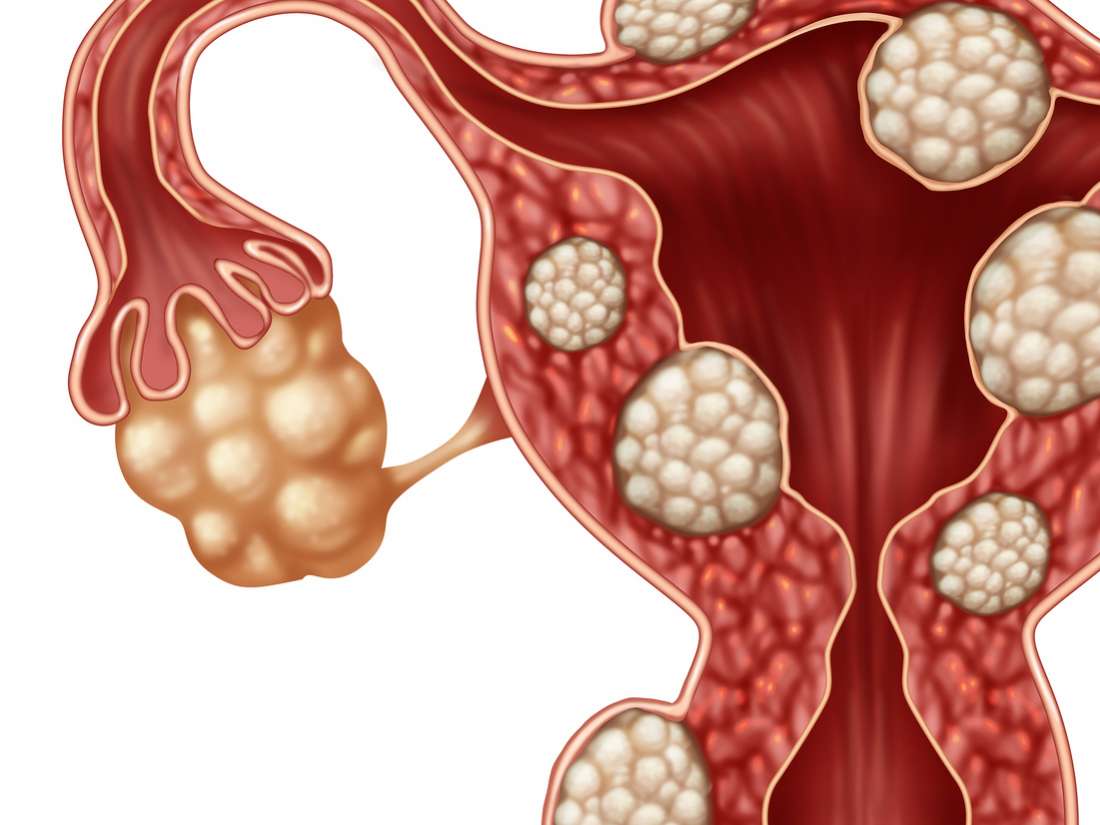
For over 100 years, our practice has been dedicated to providing all patients the special care and education needed for the treatment of colon and rectal problems.
Read more about common anal conditions or learn more the physicians at CRS.
What’s Behind Your Symptoms?: Bharat Pothuri, MD, FACG: Gastroenterologist
Rectal bleeding is a concerning symptom that deserves a consultation with a specialist like Bharat Pothuri, MD, of GastroDoxs. It can be a sign of a relatively benign issue like hemorrhoids or of something far more serious, like colorectal cancer.
Not all rectal bleeding shows up in the same way. Here’s what your symptoms could mean.
How rectal bleeding may look
Rectal bleeding can appear in several different ways. You may notice a slight bit on toilet paper as your wipe, discoloration in your stool, or droplets in the toilet bowl water.
The color of the blood gives you some clues as to where the bleeding may be coming from. For example, dark red or maroon blood may indicate that you have bleeding higher in the colon or the small intestine. Very dark or tar-like stool may indicate bleeding is occuring in the stomach due to ulcers or another condition. Bright red blood is a sign that bleeding is happening lower in the colon or at the rectum.
For example, dark red or maroon blood may indicate that you have bleeding higher in the colon or the small intestine. Very dark or tar-like stool may indicate bleeding is occuring in the stomach due to ulcers or another condition. Bright red blood is a sign that bleeding is happening lower in the colon or at the rectum.
Conditions associated with rectal bleeding
Many conditions can cause rectal bleeding, and some are more serious than others. Since you don’t want to risk missing a serious condition and expert treatment, if you experience rectal bleeding, it’s best to make an appointment with us at GastroDoxs.
Some of the causes of rectal bleeding are:
Hemorrhoids
Hemorrhoids are swollen veins in the anus or rectum. They result from straining during bowel movements, chronic constipation, lifting heavy objects, having anal intercourse, and obesity.
If your hemorrhoids are causing bright red streaks on your toilet paper when you wipe, it’s completely normal — although possibly uncomfortable.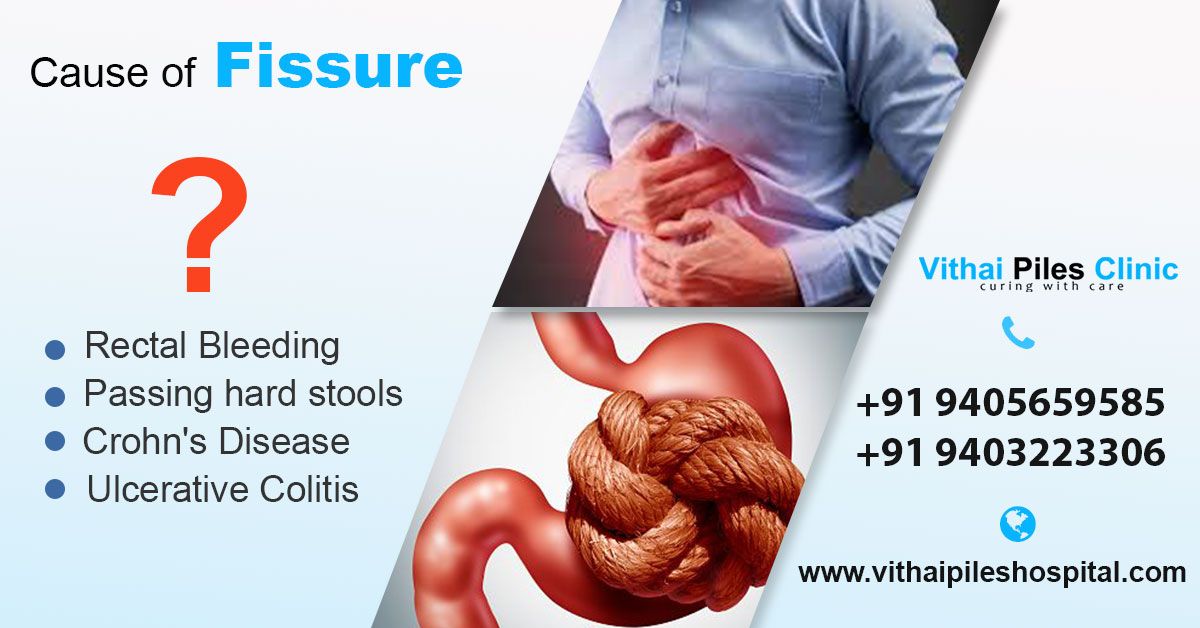 GastroDoxs can help treat your hemorrhoids and resolve your discomfort.
GastroDoxs can help treat your hemorrhoids and resolve your discomfort.
Anal fissure
If you have a tear around the skin of the anus, it’s called an anal fissure. A fissure forms when you pass a very firm, resistant stool. You may notice blood in your stool, in the toilet water, or on toilet paper, and you may feel burning pain during bowel movements. Anal fissures heal on their own.
Anal abscess or fistula
When the glands inside your anus become infected, they may form an abscess or fistula. We can help you heal these infections and find relief.
Diverticulosis and diverticulitis
Diverticuli are small pouches that develop in weakened areas of your intestine. If they protrude through the walls of your intestines, they can cause bleeding and infections. Diverticulosis and diverticulitis are manageable conditions.
Inflammatory bowel disease
Inflammatory bowel disease (IBD) includes ulcerative colitis and Crohn’s disease. IBD is an autoimmune condition that can cause fever, diarrhea, abdominal pain, and rectal bleeding. IBD is not curable, but the symptoms may be managed with expert guidance and treatments from Dr. Pothuri.
IBD is not curable, but the symptoms may be managed with expert guidance and treatments from Dr. Pothuri.
Ulcers
Ulcers result when your digestive fluids are out of balance, causing damage to the lining of your digestive tract. When ulcers cause bleeding, it appears in your stool as dark and tarry.
Colon polyps
Colon polyps grow on the inside of your colon. Some of them can turn into cancer if not treated. Rectal bleeding is a sign that you have these polyps and that some may be cancerous. Regular colonoscopies, recommended when you reach age 50, are an important preventive care strategy to protect you from colon cancer.
Rectal bleeding is not something to ignore. If you live around the area of Houston, Texas, and have noticed rectal bleeding, call us today to set up an appointment. Or you can use the online tool to book your visit right now.
Rectal Bleeding Specialist – Novato, CA: Mark Bazalgette, M.D.: Colorectal Surgeon
What is rectal bleeding?
Rectal bleeding describes any kind of blood passing through your anus. Even though it’s called rectal bleeding, this blood can come from anywhere in your gastrointestinal tract or rectum.
Even though it’s called rectal bleeding, this blood can come from anywhere in your gastrointestinal tract or rectum.
When you have rectal bleeding, it can range in color from bright red to maroon or black. You can also have rectal bleeding that isn’t visible to the naked eye.
The amount of blood you pass if you have rectal bleeding can also vary. In mild cases, you might see a few bright-red spots on your toilet tissue after having a bowel movement. In other cases, you can pass several spoonfuls which can lead to additional health complications like anemia, low blood pressure, dizziness, and fainting.
What causes rectal bleeding?
You can have rectal bleeding for several reasons, including:
- Hemorrhoids: Swollen veins inside your lower rectum or outside your anus
- Anal fissures: Cuts or tears in your anal canal or anal tissue
- Diverticulosis: Inflammation of your intestinal diverticula
- Colitis: Inflammation in your colon’s lining
- Polyps or colon cancer: Abnormal growths in your colon
Rectal bleeding doesn’t always cause pain or discomfort, but you might have other symptoms like abdominal cramps or diarrhea.
How do you diagnose and treat rectal bleeding?
Dr. Bazalgette works to diagnose the cause of your rectal bleeding by reviewing your medical history, discussing your symptoms, and performing a full physical exam. He might also recommend additional stool testing, blood tests, and diagnostic screenings.
The fastest way to diagnose rectal bleeding involves a flexible sigmoidoscopy. A flexible sigmoidoscopy is a specialized exam using a thin, flexible tube with a miniature camera attached to explore the inside of your rectum and the last two feet of your large intestine, also known as the sigmoid colon.
To explore your entire large intestine, Dr. Bazalgette performs a colonoscopy. This evaluation also uses a thin, flexible tube with a little camera, but it can explore your entire colon.
Dr. Bazalgette develops a personalized treatment strategy for your rectal bleeding based on its cause and location. For example, if he finds polyps during a flexible sigmoidoscopy or colonoscopy, Dr. Bazalgette can remove them. If you have hemorrhoids or anal fissures, Dr. Bazalgette recommends treatment based on their severity and your symptoms.
Bazalgette can remove them. If you have hemorrhoids or anal fissures, Dr. Bazalgette recommends treatment based on their severity and your symptoms.
If you have rectal bleeding, call Mark Bazalgette, M.D., or schedule an appointment online today.
Rectal bleeding | Beacon Health System
Definition
Rectal bleeding can refer to any blood that passes from your anus, although rectal bleeding is usually assumed to refer to bleeding from your lower colon or rectum. Your rectum makes up the lower portion of your large intestine.
Rectal bleeding may show up as blood in your stool, on the toilet paper or in the toilet bowl. Blood that results from rectal bleeding is usually bright red in color, but occasionally can be dark maroon.
Causes
Rectal bleeding may occur for many reasons. Common causes of rectal bleeding include:
- Anal fissure (a small tear in the lining of the anal canal)
- Constipation
- Hard stools
- Hemorrhoids (swollen and inflamed veins in your anus or rectum)
Less common causes of rectal bleeding include:
- Anal cancer
- Angiodysplasia (abnormalities in the blood vessels near the intestines)
- Colon cancer
- Colon polyps
- Crohn’s disease (a type of inflammatory bowel disease)
- Diarrhea
- Diverticulosis (a bulging pouch that forms on the wall of the intestine)
- Inflammatory bowel disease (IBD)
- Ischemic colitis (colon inflammation caused by reduced blood flow)
- Proctitis (inflammation of the lining of the rectum)
- Pseudomembranous colitis (colon inflammation caused by an infection)
- Radiation therapy
- Rectal cancer
- Solitary rectal ulcer syndrome (ulcer of the rectum)
- Ulcerative colitis (a type of inflammatory bowel disease)
When to see a doctor
Call 911 or emergency medical assistance
Seek emergency help if you have significant rectal bleeding and any signs of shock:
- Rapid, shallow breathing
- Dizziness or lightheadedness after standing up
- Blurred vision
- Fainting
- Confusion
- Nausea
- Cold, clammy, pale skin
- Low urine output
Seek immediate medical attention
Have someone drive you to an emergency room if rectal bleeding is:
- Continuous or heavy
- Accompanied by severe abdominal pain or cramping
Schedule a doctor’s visit
Make an appointment to see your doctor if you have rectal bleeding that lasts more than a day or two, or earlier if the bleeding worries you.
Last Updated: March 4th, 2020
Rectal bleeding
Definition
Rectal bleeding is when blood passes from the rectum or anus. Bleeding may be noted on the stool or be seen as blood on toilet paper or in the toilet. The blood may be bright red. The term “hematochezia” is used to describe this finding.
Alternative Names
Rectal bleeding; Blood in the stool; Hematochezia; Lower gastrointestinal bleeding
Considerations
The color of the blood in the stools may indicate the source of bleeding.
Black or tarry stools may be due to bleeding in the upper part of the GI (gastrointestinal) tract, such as the esophagus, stomach, or the first part of the small intestine. In this case, blood is most often darker because it gets digested on its way through the GI tract. Much less commonly, this type bleeding can be brisk enough to present with bright rectal bleeding.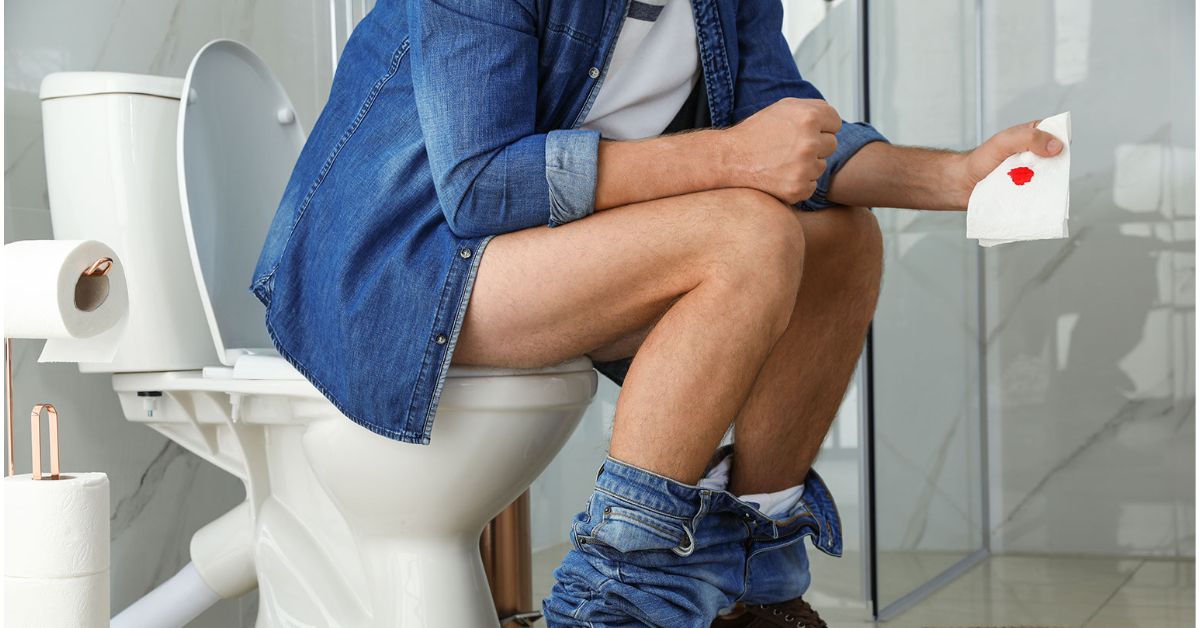
With rectal bleeding, the blood is red or fresh. This usually means that the source of bleeding is the lower GI tract (colon and rectum).
Eating beets or foods with red food coloring can sometimes make stools appear reddish. In these cases, your doctor can test the stool with a chemical to rule out the presence of blood.
Causes
Rectal bleeding causes include:
- Anal fissure (a cut or a tear in the anal lining, often caused by straining hard, hard stools or frequent diarrhea). It may cause sudden onset of rectal bleeding. There is most often pain at the anal opening.
- Hemorrhoids, a common cause of bright red blood. They may or may not be painful.
- Proctitis (inflammation or swelling of the rectum and anus).
- Rectal prolapse (rectum falls out through the anus).
- Trauma or foreign body.
- Colorectal polyps.
- Colon, rectal, or anus cancer.

- Ulcerative colitis.
- Infection in the intestines.
- Diverticulosis (abnormal pouches in the colon).
When to Contact a Medical Professional
Contact your health care provider if there is:
- Fresh blood in your stools
- A change in the color of your stools
- Pain in the anal area while sitting or passing stools
- Incontinence or lack of control over passage of stools
- Unexplained weight loss
- Drop in blood pressure that causes dizziness or fainting
You should see your provider and have an exam, even if you think that hemorrhoids are causing the blood in your stool.
In children, a small amount of blood in the stool is most often not serious. The most common cause is constipation. You should still tell your child’s provider if you notice this problem.
What to Expect at Your Office Visit
adam.com”>Your provider will take a medical history and perform a physical exam. The exam will focus on your abdomen and rectum.You may be asked the following questions:
- Have you had any trauma to the abdomen or rectum?
- Have you had more than one episode of blood in your stool? Is every stool this way?
- Have you lost any weight recently?
- Is there blood on the toilet paper only?
- What color is the stool?
- When did the problem develop?
- What other symptoms are present (abdominal pain, vomiting blood, bloating, excessive gas, diarrhea, or fever?
You may need to have one or more imaging tests to look for the cause:
- Digital rectal exam.
- Anoscopy.
- Sigmoidoscopy or colonoscopy to look inside your colon using a camera at the end of a thin tube to find or treat the source of bleeding may be needed.

- Angiography.
- Bleeding scan.
You may have one or more lab tests before, including:
- Complete blood count (CBC)
- Serum chemistries
- Clotting studies
- Stool culture
References
Cheatham JG, Horwhat JD. Lower gastrointestinal tract bleeding. In: McNally PR, ed. GI/Liver Secrets Plus. 5th ed. Philadelphia, PA: Elsevier Saunders; 2015:chap 51.
Lamps LW. Anus. In: Goldblum JR, Lamps LW, McKenney JK, Myers JL eds. Rosai and Ackerman’s Surgical Pathology. 11th ed. Philadelphia, PA: Elsevier; 2018:chap:18.
MacGilchrist A, Iredale J, Parks R. The gastrointestinal system. In: Douglas G, Nicol F, Robertson C, eds. Macleod’s Clinical Examination. 13th ed. Philadelphia, PA: Elsevier Churchill Livingstone; 2013:chap 8.
com”>Melton-Meaux GB, Kwaan MR. Hemorrhoids, anal fissure, and anorectal abscess and fistula. In: Kellerman RD, Bope ET, eds. Conn’s Current Therapy 2018. Philadelphia, PA: Elsevier Saunders; 2018:210-213.Rectal bleeding
Any bleeding from the anus; usually occurs in the lower part of the colon or rectum. May appear as blood in the stool (seen on toilet paper). Blood with rectal bleeding often has a bright red color.
Reasons
Anal fissure (damage to the lining of the anal canal)
Constipation,
Hard stool,
Hemorrhoids (swollen and inflamed veins in the anus or rectum).
Less common reasons:
Anal canal cancer
Angiodysplasia (abnormalities in the blood vessels of the intestines)
Colon cancer
Colon polyps
Crohn’s disease (a type of inflammatory bowel disease)
Diarrhea,
Diverticulosis
Ulcerative colitis,
Ischemic colitis (inflammation of the colon caused by decreased blood flow)
Proctitis (inflammation of the rectal mucosa),
Pseudomembranous colitis (inflammation of the colon caused by infection)
Radiation therapy,
Rectal cancer,
Solitary rectal ulcer syndrome.

Diagnostics
Rectal bleeding can be a sign of some serious medical conditions. Typically, people under 40 who have rectal bleeding due to an obvious cause, such as hemorrhoids, do not need laboratory testing.
For patients over 40 years of age with rectal bleeding, a planned colonoscopy is recommended to exclude the possibility of developing colorectal cancer.
When should I see a doctor?
On a routine basis, if you notice traces of blood in your stool (for example, on toilet paper) and if the bleeding does not stop within 24 hours.
On an emergency basis if:
An urgent need to call an ambulance if rectal bleeding is profuse and accompanied by the following symptoms:
rapid, shallow breathing
dizziness,
blurred vision
loss of consciousness,
disorientation in time and space,
nausea,
cold, clammy, pale skin
decreased urine output.

- redness and itching in the eyes
- mouth ulcers
- swelling and pain in the joints
- skin lesions
- osteoporosis of bones
- formation of kidney stones
- hepatitis and liver cirrhosis (rare manifestation)
- Allergic reactions: itching or hives, swelling of the face or hands, swelling or tingling of the mouth or throat, heaviness in the chest, difficulty breathing.
- Rectal bleeding.
- There is no improvement, or vice versa, there is a worsening of symptoms after using the drug for 4 weeks.
- Pain in the anus after insertion of the applicator.
- Less than three spontaneous bowel movements per week – that is, going to the toilet without aids such as enemas or laxatives.
- Hard stools in at least a quarter of cases.
- The feeling that it is impossible to empty the rectum, the feces do not come out, at least in a quarter of cases.
- have previously found polyps in the colon;
- close family members had cases of colorectal cancer;
- were diagnosed with ulcerative colitis or Crohn’s disease;
- revealed a hereditary predisposition to colorectal cancer.
- You can go to the toilet in a big way in the usual position, if there are no problems with defecation.
- After using the toilet, it is better to wash yourself rather than use toilet paper.
- Constipation can be considered not only rare stools, but also dense feces or too long bowel movements.
- One of the most common proctological diseases are hemorrhoids and anal fissure.
- Pain and bleeding from the anus do not always indicate hemorrhoids – this is a sign that you need to undergo an examination.
- It is not worth treating hemorrhoids with traditional and alternative medicine methods – you can only lose precious time. Better to see a doctor right away.
- It is worth going to a proctologist at the first symptoms of colon diseases, during preparation for pregnancy and for routine screening for oncology.
- Before visiting a proctologist, it is worth doing a micro enema three to four hours before a visit to the doctor.
- Colon cancer can be asymptomatic, so you should not skip a routine check-up and screening colonoscopy.
- Colonoscopy can be done with or without sedation. In the case of sedation, the procedure should be supervised by an anesthesiologist.
- Anal sex can injure the sphincter and rectal mucosa and increase the risk of sexually transmitted infections.
- Crohn’s disease is characterized by mild bloody masses in the stool.
- Diseases of an infectious nature provoke the appearance of blood from the priests. It is a common cause of anal bleeding in countries with poor sanitary conditions.
- The cause of the detection of spotting in the stool may be cancer.
- Blood can be secreted with ulcers of the gastrointestinal tract.
- Certain viral diseases can cause blood to flow during bowel movements. Hemorrhoids, one of the most commonly diagnosed causes of blood from the anus, can occur in adults of any age.
- Possible rectal bleeding due to parasite infestation.
- In dysentery, blood may drip after a bowel movement. Most often, the patient also has a stool disorder.
- The detection of blood from the anus in men and women may be due to rectal trauma.
- Sometimes, during the formation of very hard feces, trauma to the rectum occurs.
- When the blood from the anus has a dark red or burgundy color, the development of a disease in the intestinal region is possible.
- Dark blood clots from the anus may be the result of thickening or the development of diverticulums in the large intestine.In this case, a person does not feel any symptoms for a long time until there is a discharge of blood from the anus, which is often accompanied by severe pain.
- Red blood detection is common in hemorrhoids or anal fissures. Usually, traces of bloody discharge are not noticed in the chair itself, on napkins or underwear. Sometimes scarlet blood from the anus is found without pain and any signs of the disease, but even minor blood loss cannot be ignored.
- When red blood comes from the anus, this may mean the development of neoplasms.
- Dark discharge and thick stools can be caused by a disease or abnormality in one of the gastrointestinal tract.
- If a person has severe bleeding from the anus, an ambulance must be called immediately.You shouldn’t go to the hospital yourself by public transport. If the patient suffers from bleeding, it can cause fainting and worsening of the condition. Excessive bleeding is always recognized as an urgent situation when a patient needs qualified medical care.
- If it bleeds from the anus for a long time and the bleeding does not stop, even if it is not severe, go to the doctor immediately.
- The appearance of bloody or ordinary vomiting along with blood from the anus in women and men threatens the patient’s life.
90 025 90 000 Rectal bleeding – causes, symptoms, diagnosis and treatment
Rectal bleeding is the discharge of blood from the anus due to a violation of the integrity of the vessels in the rectum and lower gastrointestinal tract. It can be observed with a large number of diseases of various etiologies. It manifests itself in the form of any amount of fresh blood or clots in the stool, stains on toilet paper and underwear.Usually, blood loss is insignificant to moderate, profuse rectal bleeding is rare. The diagnosis is made on the basis of symptoms, fecal occult blood test, radiological and endoscopic examinations. Treatment tactics are determined by the underlying pathology.
General information
Rectal bleeding is a syndrome that can be observed in a number of inflammatory, infectious, oncological diseases and some other pathological conditions that affect the rectum and lower gastrointestinal tract. Rectal bleeding is diagnosed when there is any amount of blood in the stool (including single streaks), on linen, or toilet paper. The incidence has not been elucidated due to insufficient standardization of criteria for rectal bleeding. Experts believe that the statistical data cited in various sources should be considered, rather, a reflection of the detectability, rather than the true prevalence of pathology.
Rectal bleeding is diagnosed when there is any amount of blood in the stool (including single streaks), on linen, or toilet paper. The incidence has not been elucidated due to insufficient standardization of criteria for rectal bleeding. Experts believe that the statistical data cited in various sources should be considered, rather, a reflection of the detectability, rather than the true prevalence of pathology.
Usually in the literature there are references to the fact that the share of rectal bleeding accounts for 20-25% of the total amount of bleeding from all parts of the gastrointestinal tract.Most often, pathology is diagnosed in patients 63-77 years old. The risk of development increases significantly with age (from 30 to 80 years – almost 200 times). Rectal bleeding in only 10-15% of cases is accompanied by systemic hemodynamic disorders (fainting, collapse). Intense bleeding requiring urgent surgery is rare. Anemia may develop with mild to moderate recurrent rectal bleeding. The treatment is carried out by specialists in the field of clinical proctology and gastroenterology.
The treatment is carried out by specialists in the field of clinical proctology and gastroenterology.
Rectal bleeding
Causes
All causes of rectal bleeding can be divided into several groups: caused by benign and malignant tumors of the lower gastrointestinal tract, abnormal growths of the colon mucosa, chronic diseases of the intestine and the anus, poisoning and infectious lesions, congenital acquired local circulatory disorders, stool disorders, complications of various diseases and radiation therapy.
Among the oncological lesions that provoke rectal bleeding, colorectal cancer is worth mentioning in the first place. Minor bleeding with this pathology may be present already at the initial stages of the development of the disease. With the disintegration of the tumor, rectal bleeding becomes more abundant, in some cases significant blood loss is possible due to the melting of a large vessel. Abnormal growths (polyps) are also common causes of rectal bleeding.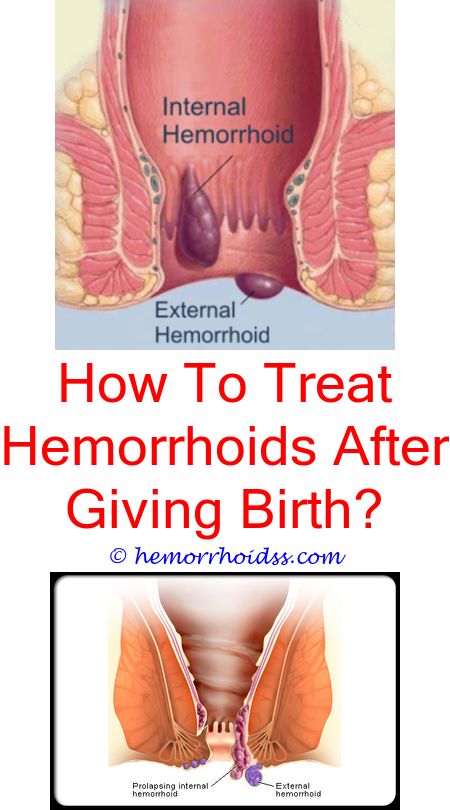 Vascular-rich villous polyps bleed especially frequently.
Vascular-rich villous polyps bleed especially frequently.
Bleeding from the anus is a permanent symptom of ulcerative colitis and Crohn’s disease. In addition, rectal bleeding can occur with colon diverticulitis, proctitis, and single rectal ulcers. Sometimes minor bleeding, more often determined only when analyzing feces for occult blood, develops with ordinary food poisoning. This symptom is also constantly encountered with infectious lesions of the gastrointestinal tract (for example, with dysentery).
Rectal bleeding is also present in pseudomembranous colitis resulting from specific dysbiosis against the background of antibiotic therapy. Sometimes in patients with bleeding from the anus, congenital vascular anomalies (angiodysplasia) or intestinal ischemia are detected due to acquired circulatory disorders in the abdominal cavity and small pelvis. Rectal bleeding is often caused by hemorrhoids, anal fissures, and rectal prolapse.
The symptom can be observed with rectal fistulas of various etiologies (with paraproctitis, Crohn’s disease, diverticulitis, rectal cancer, some specific infections), intestinal intussusception and rectal prolapse. In addition, rectal bleeding often develops in cancer patients who have been prescribed radiation therapy to the pelvic region (most often for prostate cancer). Usually, the symptom appears some time after the completion of the course of treatment and is a consequence of radiation proctitis.
In addition, rectal bleeding often develops in cancer patients who have been prescribed radiation therapy to the pelvic region (most often for prostate cancer). Usually, the symptom appears some time after the completion of the course of treatment and is a consequence of radiation proctitis.
Symptoms of bleeding
The nature and intensity of rectal bleeding depend on the underlying pathology. With anal fissures, patients complain of intense pain during bowel movements.Small amounts of blood are separated and show up as small, bright red smears on toilet paper. With hemorrhoidal rectal bleeding, similar symptoms can be observed, however, there are no pronounced pains during the act of defecation. Some patients have prolapse of hemorrhoids. The blood is often bright scarlet, although dark clots may also be released. Rectal bleeding with hemorrhoids is more intense, anemia may develop.
With diverticulitis, rectal bleeding develops relatively infrequently, but can be profuse, requiring urgent treatment. The type of blood depends on the location of the diverticulum. With the defeat of the sigmoid colon, the blood is bright red, with diverticula of the right sections of the colon – maroon, sometimes almost black. Patients are worried about abdominal pain, fever and hyperthermia resulting from inflammation of the mucous membrane of the diverticulum. Rectal bleeding with diverticulitis can stop on its own and then recur after a few months or even years.
The type of blood depends on the location of the diverticulum. With the defeat of the sigmoid colon, the blood is bright red, with diverticula of the right sections of the colon – maroon, sometimes almost black. Patients are worried about abdominal pain, fever and hyperthermia resulting from inflammation of the mucous membrane of the diverticulum. Rectal bleeding with diverticulitis can stop on its own and then recur after a few months or even years.
Rectal bleeding in colon polyps can occur against a background of subjective well-being or abdominal pain and stool disorders.The intensity of such bleeding is usually low, but their frequent repetition can cause anemia, especially in hereditary familial polyposis with a large number of villous polyps prone to bleeding.
Rectal bleeding in colorectal cancer is initially insignificant, blood can be found in the feces in the form of clots or streaks. When the tumor decays, the volume of blood secreted can increase. Along with anemia, abdominal pain and stool disorders, common manifestations of cancer are observed: weakness, weight loss, lack of appetite, hyperthermia and intoxication syndrome.Rectal bleeding with angiodysplasia is not accompanied by any symptoms. Abdominal pain and stool disturbances are absent. Development of anemia is possible. The color of the blood in polyps and cancer depends on the location of the node. The higher the neoplasm is, the darker the emitted blood. With angiodysplasia, this pattern is less pronounced, the blood often has a bright red tint.
Along with anemia, abdominal pain and stool disorders, common manifestations of cancer are observed: weakness, weight loss, lack of appetite, hyperthermia and intoxication syndrome.Rectal bleeding with angiodysplasia is not accompanied by any symptoms. Abdominal pain and stool disturbances are absent. Development of anemia is possible. The color of the blood in polyps and cancer depends on the location of the node. The higher the neoplasm is, the darker the emitted blood. With angiodysplasia, this pattern is less pronounced, the blood often has a bright red tint.
With rectal bleeding caused by proctitis and colitis of various etiologies, abdominal pain, diarrhea and pathological impurities in the feces are observed.Along with pus and mucus, streaks of blood can be detected in fecal matter. In severe acute diseases and exacerbations of chronic forms of colitis and proctitis with severe clinical symptoms, rectal bleeding may increase, but significant blood loss is uncommon. Radiation proctitis and colitis occur with similar symptoms; in most cases, rectal bleeding stops after completion of the course of radiation therapy.
Radiation proctitis and colitis occur with similar symptoms; in most cases, rectal bleeding stops after completion of the course of radiation therapy.
Diagnostics
Rectal bleeding is diagnosed based on patient complaints, rectal examination data, fecal occult blood analysis, sigmoidoscopy or colonoscopy.To assess the severity of anemia, a complete blood count is performed. To identify the underlying pathology that caused the development of rectal bleeding, radiological methods are used (CT, plain and contrast radiography, visceral angiography, fistulography for fistulas), biopsy, coprogram, bacteriological analysis of feces, biochemical blood test and other studies. The differential diagnosis is carried out with bleeding from other parts of the gastrointestinal tract.
Treatment of rectal bleeding
Treatment tactics are determined by a specialist proctologist, taking into account the severity and causes of the development of pathology.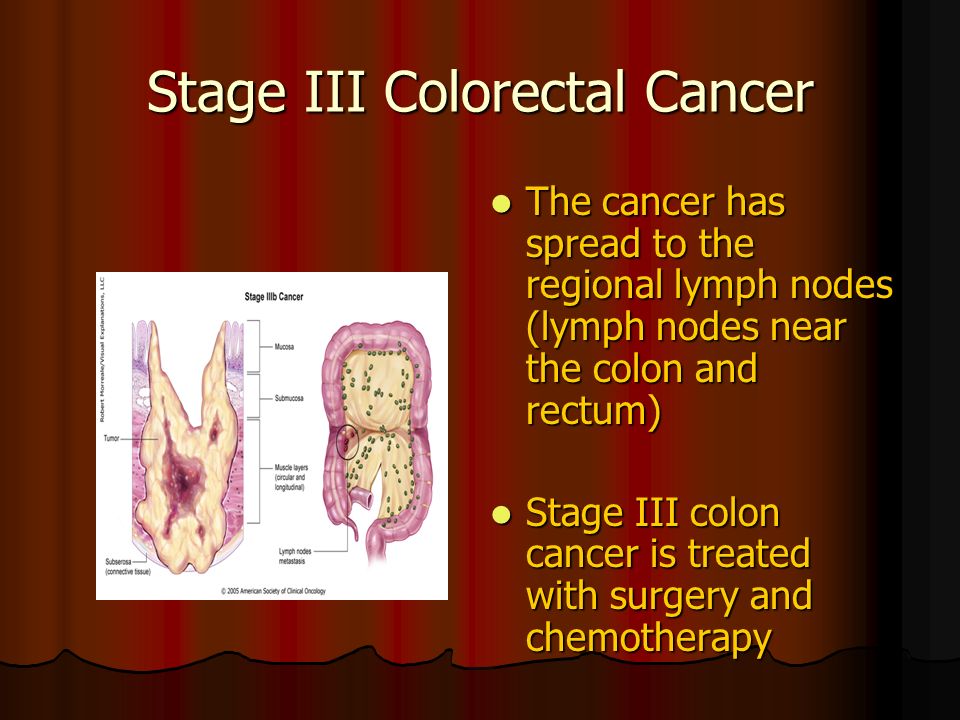 With minor rectal bleeding, the proctologist recommends rest, prescribes a special diet. Recurrent bleeding may require treatment for anemia. In all cases, the underlying disease is treated.
With minor rectal bleeding, the proctologist recommends rest, prescribes a special diet. Recurrent bleeding may require treatment for anemia. In all cases, the underlying disease is treated.
In case of profuse blood loss, emergency measures are required to stop bleeding in combination with replenishment of the circulating blood volume. Infusion therapy is carried out using blood and blood substitutes. The volume of blood transfusion is determined individually. To stop rectal bleeding, local hypothermia of the affected area and therapeutic endoscopic techniques are used: diathermocoagulation, laser photocoagulation, application of hemostatic films, local administration of hemostatic drugs.If necessary, perform emergency surgical interventions.
Forecast and prevention
The forecast for rectal bleeding depends on the volume and rate of blood loss. Most bleeding ends on its own and does not lead to serious disturbances in the patient’s condition. Mortality in rare, profuse rectal bleeding ranges from 4 to 10%. Prevention consists in the timely detection and treatment of diseases that can provoke this pathology.
Mortality in rare, profuse rectal bleeding ranges from 4 to 10%. Prevention consists in the timely detection and treatment of diseases that can provoke this pathology.
Complications of ulcerative colitis
Certain conditions require immediate medical attention. These include frequent loose stools, rectal bleeding with blood clots in the stool, and persistent pain and fever. In some cases diarrhea and bleeding can cause dehydration. Hospitalization may be required to stop diarrhea and replenish blood, fluids, and minerals in the body.Another possible complication of ulcerative colitis is bowel perforation . Chronic inflammation in the intestine can affect all layers of the intestinal wall to such an extent that an opening (perforation) is formed. This is a potential life-threatening condition as intestinal contents enter the abdomen and can cause a serious condition called peritonitis.
A serious complication of ulcerative colitis is toxic megacolon (dilation) ./how-to-treat-rat-bites-1298270-5c047247c9e77c00010bac59.png) The inflammation can cause the colon to expand rapidly. The large intestine ceases to function normally, which prevents the body from emptying the intestines. In some cases, perforation of the intestinal wall may occur. Symptoms of toxic megacolon include pain, bloating, fever, heart palpitations, constipation, and dehydration. This life-threatening complication requires immediate treatment. If toxic megacolon is suspected based on symptoms and clinical examination, the diagnosis is confirmed by blood tests and an abdominal X-ray.In many cases, surgical treatment is required, which involves removing the large intestine (colectomy).
The inflammation can cause the colon to expand rapidly. The large intestine ceases to function normally, which prevents the body from emptying the intestines. In some cases, perforation of the intestinal wall may occur. Symptoms of toxic megacolon include pain, bloating, fever, heart palpitations, constipation, and dehydration. This life-threatening complication requires immediate treatment. If toxic megacolon is suspected based on symptoms and clinical examination, the diagnosis is confirmed by blood tests and an abdominal X-ray.In many cases, surgical treatment is required, which involves removing the large intestine (colectomy).
In addition to the complications previously noted, patients with ulcerative colitis are at an increased risk of colon cancer . For those patients whose entire colon is affected, the risk of colon cancer begins to increase eight to ten years after the onset of the disease. For patients whose disease is limited to the left colon, the risk begins to increase 15 years after the onset of the disease. Patients with active and inactive inflammatory bowel disease are at risk. The increased risk is not associated with patients whose disease only affects the rectum. Symptoms such as rectal bleeding, which are an early sign of colon cancer in the general population, are difficult to assess in patients with inflammatory bowel disease, for whom it is more indicative of an exacerbation rather than cancer. Because of the increased risk of colon cancer, colonoscopy is recommended every one to two years, eight to ten years after the diagnosis of inflammatory bowel disease.The frequency of colonoscopy for each individual patient depends on the area of the lesion and the length of time since the onset of the disease.
Patients with active and inactive inflammatory bowel disease are at risk. The increased risk is not associated with patients whose disease only affects the rectum. Symptoms such as rectal bleeding, which are an early sign of colon cancer in the general population, are difficult to assess in patients with inflammatory bowel disease, for whom it is more indicative of an exacerbation rather than cancer. Because of the increased risk of colon cancer, colonoscopy is recommended every one to two years, eight to ten years after the diagnosis of inflammatory bowel disease.The frequency of colonoscopy for each individual patient depends on the area of the lesion and the length of time since the onset of the disease.
In addition to symptoms related to the gastrointestinal tract, in some patients, complications of ulcerative colitis may manifest in other organs with the following symptoms:
All of the above symptoms are called extraintestinal manifestations, such as ulcerative colitis outside the intestines. In some people, they may actually be the first signs of ulcerative colitis before intestinal symptoms. In others, they may develop before or during an exacerbation of the disease.
In some people, they may actually be the first signs of ulcerative colitis before intestinal symptoms. In others, they may develop before or during an exacerbation of the disease.
For more information on extraintestinal complications, see the Complications of Inflammatory Bowel Disease chapter.
Arpimed
Special instructions
In order to avoid relapses, you should continue to use Proktomed for at least one more week, but at a lesser frequency (1 time per day), even if the symptoms have completely disappeared.However, the duration of treatment should not exceed four weeks.
Unless otherwise prescribed by a doctor, patients are not recommended to use Proktomed for self-treatment of symptoms of hemorrhoids if they have heart disease, arterial hypertension, hyperthyroidism, diabetes mellitus, urinary retention (prostatic hypertrophy).
Before starting independent treatment with Proktomed, patients should consult a doctor if they are currently taking antihypertensive drugs or antidepressants (for example, MAO inhibitors).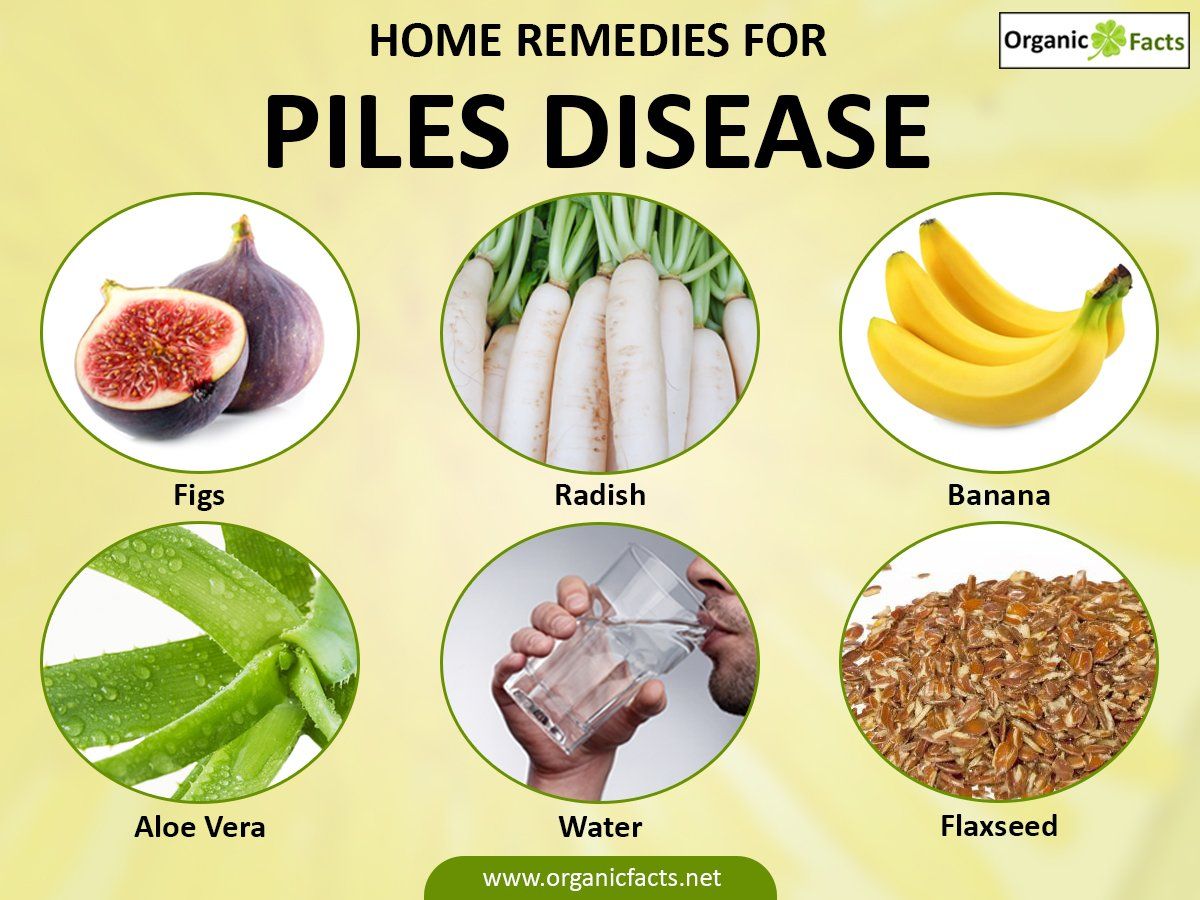
If, during the use of Proktomed for the treatment of pain, itching and burning with hemorrhoids, rectal bleeding occurs or rash, irritation, swelling, pain, bleeding or other symptoms develop or intensify, then you should stop using the drug and consult your doctor.
Tell your doctor if you are pregnant before using this drug. It is not known whether or not this drug is excreted in breast milk. Consult your doctor before starting breastfeeding.
If you forget to take the next dose of the drug, take it as soon as you remember.
If it is time for the next dose of the drug, do not take the missed dose and continue using as usual. Do not take a double dose to make up for a missed appointment.
In case of bleeding, deterioration or no effect within 7 days, discontinue use of the drug and seek medical advice.
In case of accidental oral administration of the drug (for example, by swallowing several grams of cream), it is mainly likely that systemic side effects, especially from the cardiovascular system – a decrease in the activity of the heart until it stops, from the central nervous system – convulsions, depression breathing until it stops.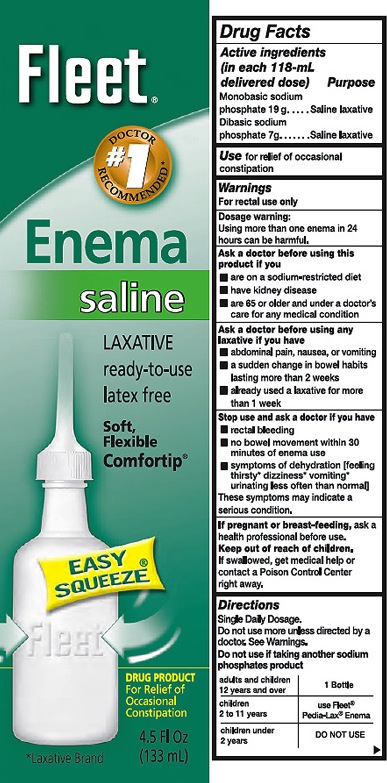
Avoid eye contact with Proctomed. It is recommended to wash your hands thoroughly after using the drug.
Do not exceed the recommended dose unless directed by a doctor. Should not be used in conjunction with antihypertensive drugs and antidepressants (eg, fluoxetine, sertraline).
Since the drug contains methylparaben and propylparaben, it may cause delayed allergic reactions.
Patient Information
Tell your doctor if you experience any of the following side effects:
90 025 90 000 11 important questions for proctologist Maryana Abritsova
Ekaterina Kushnir
asked about intimate
Maryana Abritsova
proctologist
We talked with Maryana Abritsova, a coloproctologist surgeon, candidate of medical sciences.
We figured out how to go to the toilet correctly, what to do to avoid hemorrhoids, how to identify colorectal cancer, and when you should definitely see a proctologist.
What will you learn
What does a proctologist treat?
One of the most common proctological diseases is hemorrhoids. There are no official statistics on the incidence of this disease, but, according to observations, it occurs at different periods of life in almost everyone. The reason is a large number of provoking factors: violation of bowel movements, especially constipation, pregnancy and natural childbirth, long sitting on the toilet.
Hemorrhoids – Medscape
Physician’s Guide
Chronic anal fissures are in second place in terms of treatment. An anal fissure is damage to the mucous membrane of the anal canal, that is, the lowest part of the rectum. Chronic fissures are those that have existed for more than six weeks. People often come to me with chronic pelvic pain, constipation, perianal itching – when there is itching around the anus.
Anal Fissure – Mayo Clinic Blog
Chronic Pelvic Pain – American College of Obstetrics and Gynecology
Most often, perianal itching is a symptom of some kind of disease, and not an independent disease.It can be a manifestation of the same anal fissure or inflammatory bowel disease, such as Crohn’s disease. Sometimes this is how various skin diseases manifest themselves – dermatitis, including psoriasis, eczema and others. It happens that a dermatological disease is transformed: before the rash and itching were in other parts of the body, and then moved to the perianal area.
Perianal pruritus – msd medical manual
Sometimes such itching can also indicate diabetes mellitus or thyroid diseases: a person comes to the proctologist, he is examined and a disease is found that is not related to coloproctology.Psychogenic itching occurs when there is no reason for its appearance, but the person feels discomfort. Here you may need the help of a psychotherapist.
What is Inflammatory Bowel Disease – American Centers for Disease Control and Prevention
In the case of perianal itching, simply removing the symptoms with ointments or suppositories is not enough, it is necessary to find the cause, that is, to be examined.
Most patients are afraid of colon and rectal cancer.In fact, if detected early, they are well treated surgically. At the same time, there are chronic coloproctological diseases – for example, the already mentioned inflammatory bowel diseases like Crohn’s disease or ulcerative colitis. They can be difficult, it is necessary to adapt the person to the disease and enter into long-term remission. If left untreated or done incorrectly, they can lead to the development of malignant neoplasms.
What is Colorectal Cancer – American Cancer Association
Risk of Colorectal Cancer in Crohn’s Disease and Ulcerative Colitis – Crohn’s Disease and Ulcerative Colitis Foundation, USA
TEXTBOOK
How to beat burnout
Course for those who work hard and get tired.The price is open – you set it yourself
Start learning
Is pain in the anus and bleeding always hemorrhoids?
As I said, hemorrhoids are common in humans, but anal pain combined with bleeding can have different causes. With such complaints, it is worth examining, first of all, visiting a proctologist. He will most likely prescribe a colonoscopy – an endoscopic examination of the rectum and colon using a special apparatus with a camera at the end.
Rectal bleeding – international guide for physicians Uptodate
There are many sources of bleeding in the colon.They are usually benign, but they can include malignant diseases or precancerous processes. For example, benign growths such as polyps usually do not cause any symptoms. And if blood begins to stand out from the polyp, most likely it will transform into a malignant tumor.
This is what colon polyps may look like on colonoscopy. Source: Researchgate
Another bleeding from the anus can be due to a solitary rectal ulcer – a single ulcerative defect on its mucous membrane, endometriosis of the colon, when cells of the superficial layer of the uterus grow beyond its limits, ulcerative colitis.
Sometimes patients do not want to have a colonoscopy, just because they are sure: bleeding from the anus is always hemorrhoids, but this is not so. In addition, hemorrhoids, if present, can be combined with another process in the colon, including malignant.
But pain in the anus, including without bleeding, is more typical for acute or chronic anal fissure, paraproctitis – acute inflammation of the tissues around the rectum, and other inflammatory diseases.With hemorrhoids, pain can also sometimes be – for example, when the external node becomes inflamed or other complications arise. Sometimes the pain may not be associated with the rectum at all – for example, with injuries to the tailbone.
Pain in the anus – NHS
What are the most useless alternative treatments for hemorrhoids?
This includes all the methods of traditional medicine that are experienced by those who are afraid to go to the doctor and try to help themselves at home.Candles are often made of ice or honey, sometimes various cold objects are placed in the rectum, which are often then removed by the doctor. I had a case when hemorrhoids were treated with hot water, it came to burns. At the same time, his minimally invasive non-traumatic surgical treatment ultimately took three minutes.
Odd methods are sometimes encountered, such as taking dried cockroach powder or swallowing cherry pits, which should go to the anus and remove the hemorrhoids. Of course it doesn’t help.
Another dubious method is hirudotherapy, leech therapy. They are usually placed on the sacrum area, but it happens that they are placed on the hemorrhoids themselves, including those that have fallen out of the anus. Due to the fact that leeches secrete hirudin, which is an anticoagulant, it thins the blood, bleeding begins – sometimes very intense, even life-threatening. Sometimes there can be an infection of the bite site, an abscess can form there, that is, a focus of purulent inflammation.
A leech bite can cause severe bleeding.Source: kaser221 / Shutterstock
Self-diagnosis and self-medication can be very harmful. For example, a person has a pain in the anus, he thinks that it is hemorrhoids, he heals himself, and then an anal fissure or something else, it only gets worse.
It is easier to see a doctor right away, find out the correct diagnosis and solve the problem. Many diseases, including hemorrhoids, are now well treated with non-traumatic methods.
How to go to the toilet in a big way?
You shouldn’t think about how to go to the toilet if there are no problems with bowel movement.The most important thing is not to suppress the urge to defecate. That is, you need to visit the toilet when you want to, this is important for the prevention of violations.
There are many guidelines on how to sit properly on the toilet. However, if during bowel movements there are no difficulties and the feeling that something is left in the intestines, then you can not change the usual posture. That is, sit as usual with your knees bent at a 90 ° angle. The main thing is that the feet are completely on the floor. You should not install a high toilet bowl when you have to stand on your toes: there must be support, you need to sit in a stable position.
In the event that there are any functional disorders, it is difficult to relax, defecation is difficult, you can try a relief position when the knees are higher than the waist and bent at an angle of 35-45 °. In this position, the anorectal angle changes and the surrounding muscles relax. To get into the desired position, it is enough to use a low stand.
Community 01/26/21
What to do with constipation?
After you have taken a comfortable position, you need to breathe in your stomach and, as you exhale, begin the act of defecation.This will relax your pelvic floor muscles and make it easier to have bowel movements. If, in any position, normal defecation does not work, you need to go to the doctor.
In the position with the knees raised to the chest, the position of the rectum changes, which makes it easier to empty it in case of problems
Can toilet paper be used or is it better to wash?
After a bowel movement, it is better to wash off. When they try to remove the contamination near the anus with toilet paper, they mechanically irritate this area.Plus, the toilet paper lint can remain in the perianal folds and cause irritation as well. It can be especially strong if there are already dermatitis, ulcers, erosion and other damage in the perianal region.
You can wash yourself with a bidet or a hygienic shower with water at a comfortable temperature, then dry your skin with a towel. Soap can be used, but if it dries and irritates the skin, just use water. If it is not enough, soap should be replaced with intimate hygiene products, they have a more physiological effect.Only the outside of the perianal area should be washed. Do not stick your fingers, brushes or sponges inside, try to wash inside the anal canal.
For washing, it is advisable to have a separate cloth towel, if not, you can gently blot the skin with toilet paper or disposable paper towels. Wet toilet paper is not recommended as it can cause allergies or irritation. It is better to use hypoallergenic baby wipes outside the home, and wash yourself when you come home, although wet toilet paper can be an alternative to a hygienic shower if there are no other options.
A hygienic shower allows you to wash yourself right away on the toilet, without the need for a separate bidet
How many times a day should there be a chair?
Constipation and diarrhea are most often dealt with by gastroenterologists, but there are proctogenic constipation. This is when the feces reach the rectum, and then defecation does not occur due to muscle dysfunction, anatomical changes and other reasons. Proctologists deal with such constipation.
Constipation – Mayo Clinic Blog
There is constipation, if you observe two or more symptoms from the list for at least three months:
Diagnostics and treatment of chronic constipation – “Pabmed”
Clinical guidelines for constipation – Ministry of Health of the Russian Federation
Not the norm if during bowel movements you have to help yourself with your hands, for example, empty the bowel with your fingers, in at least a quarter of cases.
You can still focus on the Bristol stool scale, that is, on the consistency of stool.They are divided into 7 types: types 1-3 – constipation, 4-5 – the norm, 6-7 – diarrhea.
Bristol Stool Scale – Canadian Digestive Health Foundation
Persistent hard stools are considered constipation, even if the frequency of going to the toilet does not change 90 150 You should not strive to have stools every day. All people are different, with different habits, eating behavior and anatomical features of the intestine. To put it simply, bowel movements are considered the norm from three times a day to once every two to three days.The consistency is also important – the feces should not be hard, and the sensation after defecation: it should be painless, bring a feeling of lightness and complete satisfaction with the process. There should not be a feeling of incomplete emptying, as if there was something left inside, a false urge to defecate.
The duration of a normal act of defecation is three to five minutes, of which 25% is straining, an active process, and everything else is a passive process. Sitting on the toilet for 40 minutes and going to the toilet in fragments may not be the norm, even if the stool is soft and daily.
How to prepare for an appointment with a proctologist and stop being afraid?
Many people have fears and stereotypes, they are ashamed and uncomfortable. In fact, the proctologist is the same doctor as everyone else. And the rectum is the same organ, it needs to be examined and, if necessary, treated.
Examination by a proctologist, of course, is not the most pleasant event in life, but in most cases it goes without pain. Painful sensations occur if there are anal fissures, especially with spasm of the sphincter – the muscle surrounding the anus.Usually, on examination, there is only a slight distension in the anus and a false urge to defecate. The examination takes place on a proctological chair – it looks like a gynecological one, this is the most physiological and comfortable way. It is good if the doctor tells you what he will do, it helps to relax.
A proctology chair is very similar to a gynecological chair. The patient is reclining and puts his legs on special holders. Source: Roman Zaiets / Shutterstock
It is imperative to prepare for the examination of the rectum, that is, to clean it.To do this, it is enough to make either a micro enema, for example “Microlax” or “Enema Wedge”, or an enema of 30-50 ml with plain water, and then wash off. If you just go to the toilet, the rectum will empty, but fecal matter will remain on its walls.
An enema can be done just before the appointment, but ideally three to four hours before. The first emptying usually occurs immediately, but then you can go to the toilet two or three more times, mucus may be released. One enema is enough for standard preparation for the appointment of a proctologist and anoscopy – examination of the anal canal at a height of up to 10 cm using a special instrument.This procedure is usually also done at the reception.
To prepare for the appointment of a proctologist, it is enough to make a micro enema to cleanse the rectum. Source “Eapteka”
Do I need to visit a proctologist for prophylaxis?
It is impossible to answer this question unequivocally, since there are no official recommendations. I often see two extremes. Some people react sharply to information on the Internet, find all the symptoms in themselves and start living with a doctor. Others have symptoms, but they think that everything will go away on its own, they do not go to the doctor.
Ideally, you should consciously assess your condition. Constipation, diarrhea, discomfort in the anus during bowel movements, burning or itching in the anal area, bleeding from the anus is a reason to consult a proctologist. And in case of chronic diseases, the doctor himself gives recommendations on how often you need to come.
It is definitely worth visiting a proctologist at the stage of preparation for pregnancy. Pregnant women often experience hemorrhoids. A consultation with a proctologist will help reduce the risks of the disease even at the planning stage.
Colonoscopy – Mayo Clinic Blog
In addition, there are clear recommendations for the timely detection of cancer and precancerous conditions – screening colonoscopy. In this examination, the doctor examines the surface of the mucous membrane of the lower intestine, you can see neoplasms, ulcers and other changes. Experts recommend doing it from the age of 45, then repeating it every 10 years. These are guidelines for people without risk factors for colorectal cancer.
If these risk factors are present — for example, heredity or inflammatory bowel disease — screening is started earlier and testing may be needed more frequently.
This is what a colonoscope looks like. During a colonoscopy, you can not only examine the mucous membrane, but also immediately remove benign neoplasms, such as polyps. Source: WebMD
How to recognize colon cancer?
Colon cancers are often asymptomatic. Colon polyps can transform into cancer – to reduce the risks, you need to do a colonoscopy in a timely manner to identify and remove them.
Colorectal Cancer Symptoms – American Centers for Disease Control and Prevention
Colorectal Cancer – American Cancer Association
Those who have:
Fecal occult blood tests are also used for screening. It is worth taking an enzyme immunoassay to determine the presence of blood in the stool and its amount. This test is specific to human hemoglobin, which explains its high sensitivity.
In this case, a malignant tumor may not cause bleeding, then a fecal occult blood test will be false-negative. A positive result also does not mean cancer – it may be other diseases of the gastrointestinal tract.Then you need to look for the source of bleeding, that is, again, do a colonoscopy and gastroscopy.
Can colonoscopy be done under anesthesia, or is it safer without it?
Sedation, that is, putting the patient into a light sleep during the procedure, is actually a service component, it makes the colonoscopy more comfortable, therefore it is usually performed at the request of the person. Sedation will be medically indicated in a limited number of cases. For example, after some surgeries on the colon, as well as strictures – cicatricial changes due to which the lumen of the intestine narrows.That is, in situations where the procedure can be very painful.
Colonoscopy – American Association of Anesthesiologists
Guidelines for Sedation and Anesthesia in Gastrointestinal Endoscopy – American Society of Gastrointestinal Endoscopy
An experienced endoscopist can do a conventional colonoscopy as well as a sedated colonoscopy equally well. As a rule, intravenous sedation is used for the procedure, a hypnotic drug is injected. In this case, an anesthesiologist must be present, the clinic must have anesthetic equipment, including for artificial ventilation.After sedation, the person usually feels good, there is no discomfort.
The painfulness of a colonoscopy without sedation may be influenced by psychological factors such as having a bad experience or being very scared. Preparation also affects – if the patient has properly prepared for the procedure, cleansed the intestines well, as the doctor recommended, there will be less discomfort. With poor preparation, you have to inflate the colon with air, wash it out, this can increase the time of colonoscopy.The experience of the doctor and the quality of the equipment matter.
Is anal sex harmful?
To have anal sex or not is a private matter for everyone. However, this kind of sex is always traumatic for the sphincter of the rectum and its mucous membrane. The main danger here is post-traumatic insufficiency of the anal sphincter, when it does not fulfill its retaining function, incontinence of gases and feces appears. There are times when it develops even after the first experience of anal sex.
Fecal incontinence – American College of Obstetrics and Gynecology
Otherwise, everything is individual here: someone is faced with strong manifestations – for example, he cannot retain gas, the laundry is constantly getting dirty with feces, – someone does not notice anything, just the sphincter becomes weaker.
Even during anal sex, it is easier to get infected with sexually transmitted infections. The rectal mucosa does not have such a barrier function as the vagina or the penis, in addition, it is injured.You can easily become infected with gonorrhea, chlamydia, human papillomavirus, which can manifest itself as genital warts of the anal canal or perianal region. At the same time, the presence of genital warts in the anus does not mean that a person is engaged in anal sex.
Risks of Sexual Activity – UK NHS
Due to mechanical trauma, solitary ulcers can form when the mucous membrane is constantly injured in the same place.People stop practicing anal sex, treat these ulcers, then resume the usual practice again, and they reappear.
These risks can be slightly reduced. Before anal sex, it is worth doing an enema, they need to be engaged in special condoms – they are denser than ordinary ones. It is best to use a good lubricant, and without anesthetics, to control the process and reduce the risk of injury due to the fact that the person does not notice the pain.
Preparing for anal sex with sex toys can make the process less painful, but not safe.There is no safe anal sex, you need to understand the risks.
For anal sex, it is better to choose special condoms. Source: “Ozone”
Remember
Which doctor to go to when blood appears in the stool
Moscow proctologists – latest reviews
Polite doctor.The reception went well and lasted 30 minutes. Sergey Valerievich explained everything in an accessible way and issued a referral for the necessary tests. I was satisfied. I would recommend this specialist to my friends, if necessary.
Dmitriy,
November 26, 2021
Alexey Vasilievich is a polite and good doctor.I had a fairly quick consultation and scheduled an operation for tomorrow. So far, everything is going well and the quality suits me. True, for a five-minute reception, the price seems high.
Veronica,
November 28, 2021
I am very grateful to Anastasia Olegovna, an attentive, friendly, responsible doctor.The doctor helped me in solving my problem. The specialist corrected my treatment, suggested how to be treated. In general, the doctor suited me.
Galina,
November 25, 2021
The doctor is professional, wonderful.Great welcome. Mikhail Andreevich explained everything, suggested what should be done, what should not. Said to come again. I am satisfied. As a result, I realized that I need to monitor my health. The impression is positive.
Rashid,
November 24, 2021
Very competent and delicate.The doctor’s recommendations are structured and understandable. A combination of calmness, experience and patient-friendliness. In communication, you feel like a patient whom they want to help and not a resource on which they want to make money. It is valuable
Moderation,
01 December 2021
Everything went well.At the reception, Zemfira Uzeirovna asked me questions and gave her recommendations. As a result of this consultation, I realized that my question needs to be resolved as soon as possible. The doctor is attentive, explains everything clearly and easily. I was pleased with the quality of the reception.
Jacqueline,
November 29, 2021
I liked it all very much.At the reception, Aleksey Vasilyevich listened to me, explained everything, calmed me down and gave his recommendations. As it turned out, I had no problem. The doctor is qualified, correct, friendly, explains everything clearly and easily. If necessary, I can refer to him again.
Karina,
01 December 2021
Alexey Vasilievich is a good and polite doctor.I have devoted enough time. The doctor answered the questions and explained all the information in an accessible language. As a result, the reception helped in solving my question. If necessary, I will definitely contact this specialist again.
Maksim,
November 24, 2021
I found this specialist by work experience and reviews.The reception went well. Valentina Khanafievna listened to my complaints, carried out an examination, explained everything in an accessible way. She answered all my questions and gave the necessary recommendations. In my experience, the doctor is quite qualified, polite and pleasant enough.
Fatima,
November 25, 2021
Many thanks to Dmitry Yurievich.The day before his appointment, I was with another doctor, who, on the appearance of a lump in the breast during breastfeeding, diagnosed mastitis, prescribed antibiotics and said to transfer the child 2.5 months to an artificial mixture or monitor the reaction, they say: “Maybe and will endure. ” D.Yu. diagnosed normal lactostasis, and made recommendations. A day later, the bump passed. I am very grateful to the doctor for his professionalism and adequacy. Thanks.
Moderation,
02 December 2021
Show 10 reviews of 10,532 90,000 bleeding during bowel movements in women, causes, comes with stool
When it comes to diseases that manifest in intimate places, people often hide the problem and seek help only in advanced cases.This greatly complicates further treatment, since the inflammatory process has been developing for a long time. But blood from the anus can be the result of a serious illness or pathological condition and you cannot postpone a visit to the hospital.
How to explain the blood in the stool
When blood comes from the anus, you cannot panic and hide the problem. Medical problems cannot be shameful. It is necessary to find out why blood flows from the priests. Doctors are faced with a wide variety of diseases on a daily basis, and the discovery of blood from the patient’s anus will not be an obstacle to diagnosis and subsequent therapy.
There are various causes of bleeding from the anus:
You should not try to cure your rectal bleeding on your own or hope that everything will go away on its own. Even if the bleeding disappears after a couple of days, the problem is not resolved and the bleeding will return soon. Blood from the anus and the causes that provoke bleeding should be treated by a qualified doctor.
The nature of the discharge
To correct the problem with blood from the anus during bowel movements, it is necessary to understand that the causes and treatment of this condition are closely related.
Diagnostics plays an important role, however, for a high-quality diagnosis in the laboratory, examination and interview of the patient should be carried out.
Anal bleeding is profuse or not, and differs in the type and color of blood:
Damage to the anus
An anal fissure may cause slight blood loss or severe bleeding. There will be slight bleeding. When blood appears from the rectum, you should immediately consult a doctor. The appearance of blood from the anus may be the result of a fissure, but if left untreated, an infection will join and an inflammatory process will begin.The color of the discharge is usually scarlet.
In this case, the disease will be accompanied by pain, and the therapy will be long-term.
Bloody discharge appears directly during bowel movement. Going to the toilet for the most part becomes difficult due to painful sensations. Leaking blood is not the only problem, there is a risk of contracting an infection. Diagnostic procedures include interviewing the patient. If the damage is insignificant, finger or instrumental diagnostics are performed with preliminary anesthesia.
In case of profuse bleeding and severe pain, the patient undergo sigmoidoscopy or anoscopy. Before the procedure, the patient is given a strong pain reliever. Based on the results of the examination, the doctor draws a conclusion about the nature and degree of damage, and treatment is prescribed.
The effectiveness of therapy for the diagnosis of anal fissure is 70%. First of all, it is necessary to exclude the possibility of constipation and the appearance of solid feces. Correction of nutrition is carried out, alcohol, spicy and spicy foods, fatty foods, as well as food rich in preservatives and negatively affecting the digestive process are completely removed from the diet.
Candles and ointments with antiseptic, wound healing and soothing effects are used as a means of treatment. Also, the doctor may recommend baths with decoctions of medicinal herbs (chamomile, etc.). in severe cases, it requires removal of the crack with surgery.
Hemorrhoids
Both women and men are susceptible to this pathological process. The disease often manifests itself in old age. According to medical statistics, almost 80% of older men and women are prone to hemorrhoids.The patient has red blood from the anus during bowel movements. What to do in such a situation? To determine the direction of subsequent therapy, a diagnosis should be carried out.
Most often, patients notice the appearance of blood from the anus when emptying the intestines on used napkins. Bloody discharge may contain feces. Red blotches do not appear during stool, blood comes immediately after a bowel movement.
There may be mild bleeding or jet bleeding, depending on how badly the tissue is damaged.
Doctors recommend using suppositories to relieve symptoms and stop bleeding. Today the pharmaceutical industry offers a huge selection of herbal suppositories for hemorrhoids and with the addition of vasoconstrictor and sedatives, which can be purchased over the counter without a prescription. However, you still need to talk to your doctor first.
Oncology
Bleeding from the rectum is one of the signs of many diseases, including cancer.Even if the person says “I go to the toilet normally, and blood rarely appears,” it is necessary to conduct an examination. Rectal cancer is one of the most common cancers of the gastrointestinal tract. It accounts for 45% of diagnoses. Bleeding may be accompanied by purulent discharge, pain, and vomiting.
At the present time, scientists cannot isolate all the causes of the formation of cancerous tumors in the intestinal region. This means that the analysis for neoplasms can be carried out to any person.However, doctors identify a list of factors that contribute to the development of tumors. Among them is the abuse of fatty and junk food, alcohol, etc.
If a tumor is suspected, a colonoscopy is done, in which a lump is found and a tissue sample taken for biopsy. After laboratory research, a malignant tumor or benign one becomes known. One of the benign manifestations of neoplasms is polyps. They are found in 20% of patients and are successfully removed surgically.
Infectious diseases
If an infection enters the body, it can cause the development of serious diseases that cause bleeding from the anus. Symptoms are more severe when the person has just gone to the toilet. Intestinal infections are one of the most dangerous groups of diseases that cause anal bleeding.
First, the incubation process takes place, which is asymptomatic, at this time the infection spreads inside the intestine and affects the mucous membrane.
After infection of the body, diarrhea appears, which is accompanied by bloody discharge and an increase in body temperature. Vomiting often joins the symptoms. Fever and skin rashes are possible. Stool analysis is performed to establish the diagnosis. Treatment should be carried out in a stationary mode. Intestinal infections in the absence of quality medical care can lead to the death of the patient.
Other reasons
When a person poops and his anus is bleeding, you should immediately go to see a therapist.Parasite infestation may be the cause. As a rule, helminthic invasion does not provoke serious bleeding, but parasites damage the mucous membrane and a small amount of blood gets into the stool. Sometimes the patient can independently notice traces of blood, but more often a laboratory test is carried out.
How to treat colitis, the doctor will tell you similarly. There are several methods of therapy. Colitis and other inflammations in the rectal area are more common in older patients.
These diseases are accompanied by stool disorders and painful sensations.
Ulcerative colitis and Crohn’s disease are caused by small ulcers that form on the intestinal lining. Inflammation joins the wounds, the patient feels pain, diarrhea begins and the body temperature rises. Treatment of such a condition is a complex and lengthy process that must take place under medical supervision. The therapy is based on antibiotics and anti-inflammatory drugs.

 It may result from passing hard stools or from having many diarrhea stools. Symptoms are pain during and right after passing a stool, mild rectal bleeding, and rectal itching.
It may result from passing hard stools or from having many diarrhea stools. Symptoms are pain during and right after passing a stool, mild rectal bleeding, and rectal itching. It often means that the bleeding is coming from the rectal opening (anus). The two most common causes of this type of bleeding are hemorrhoids and anal fissures.
It often means that the bleeding is coming from the rectal opening (anus). The two most common causes of this type of bleeding are hemorrhoids and anal fissures.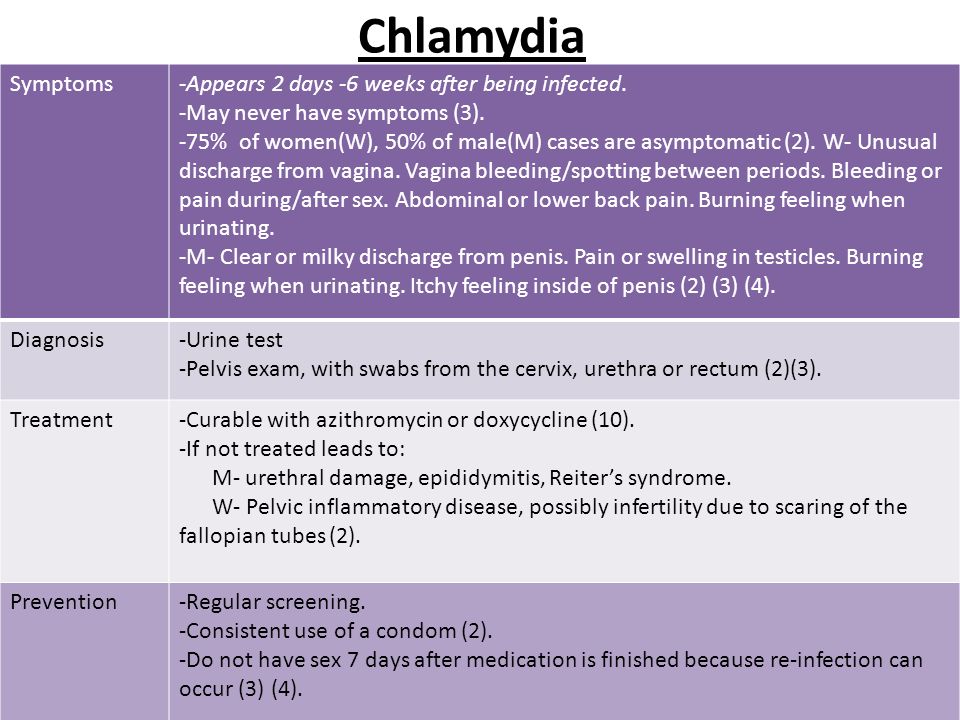 Stomach acid breaks down the blood and turns it black.
Stomach acid breaks down the blood and turns it black. However, it is not always serious.
However, it is not always serious.






